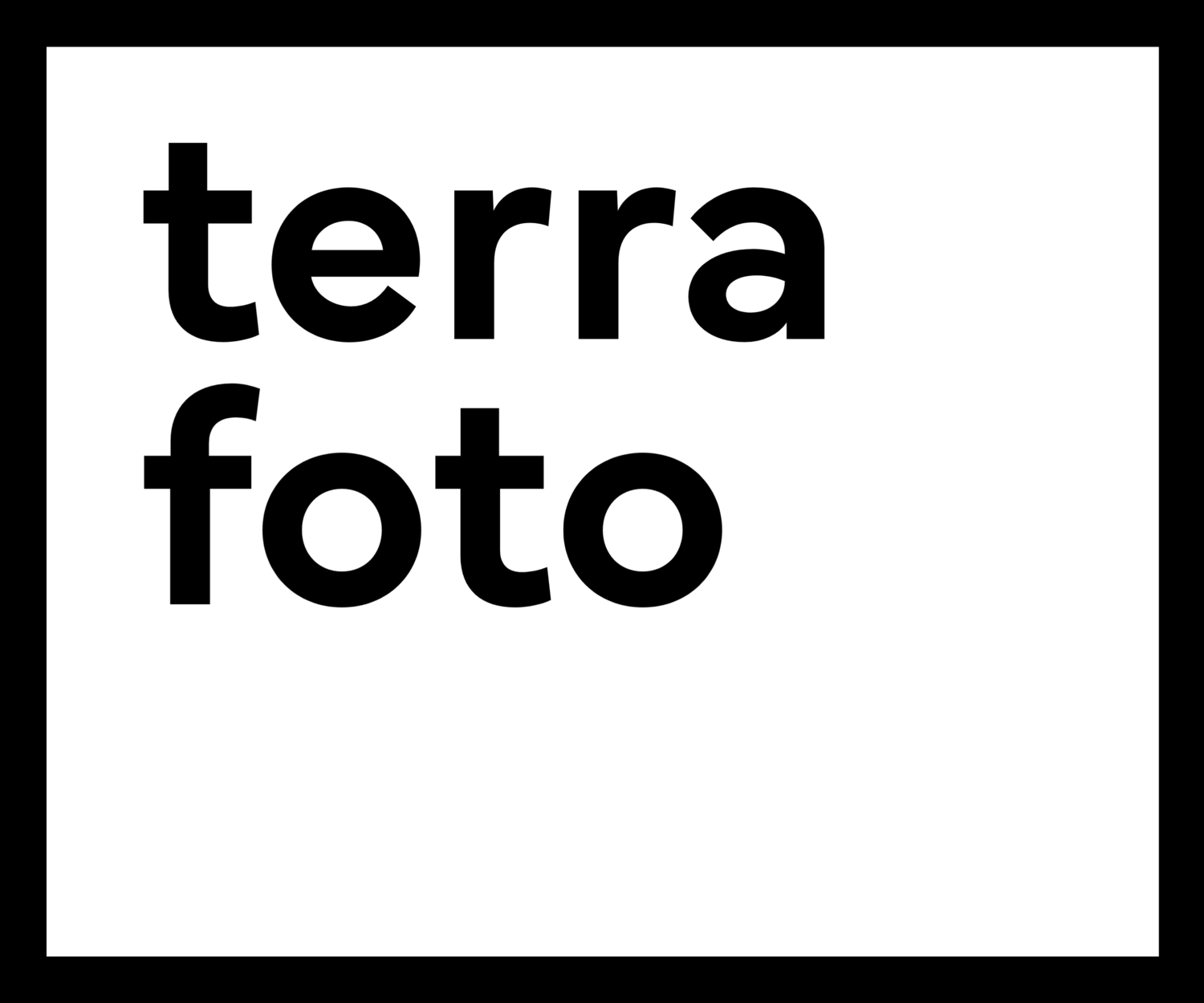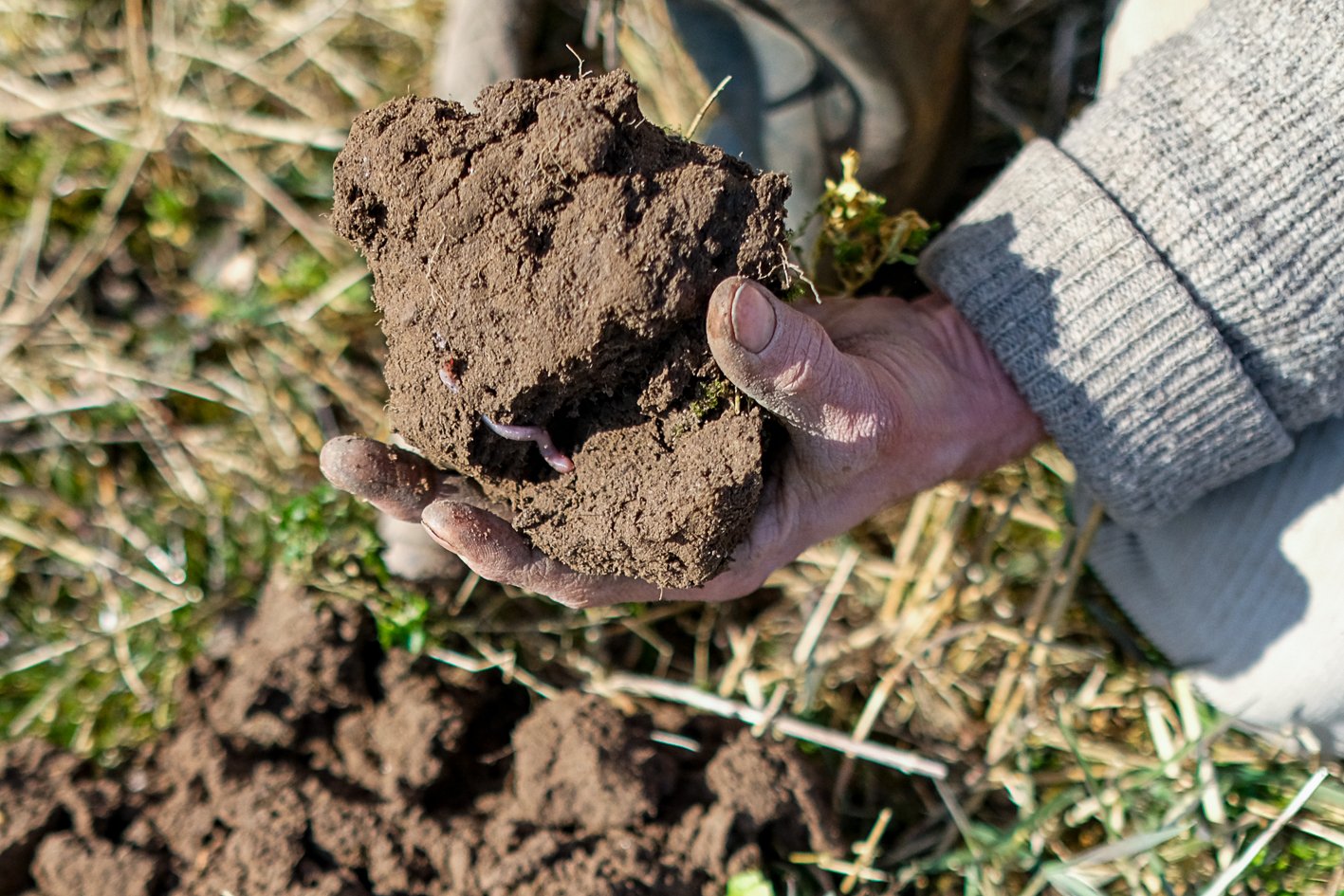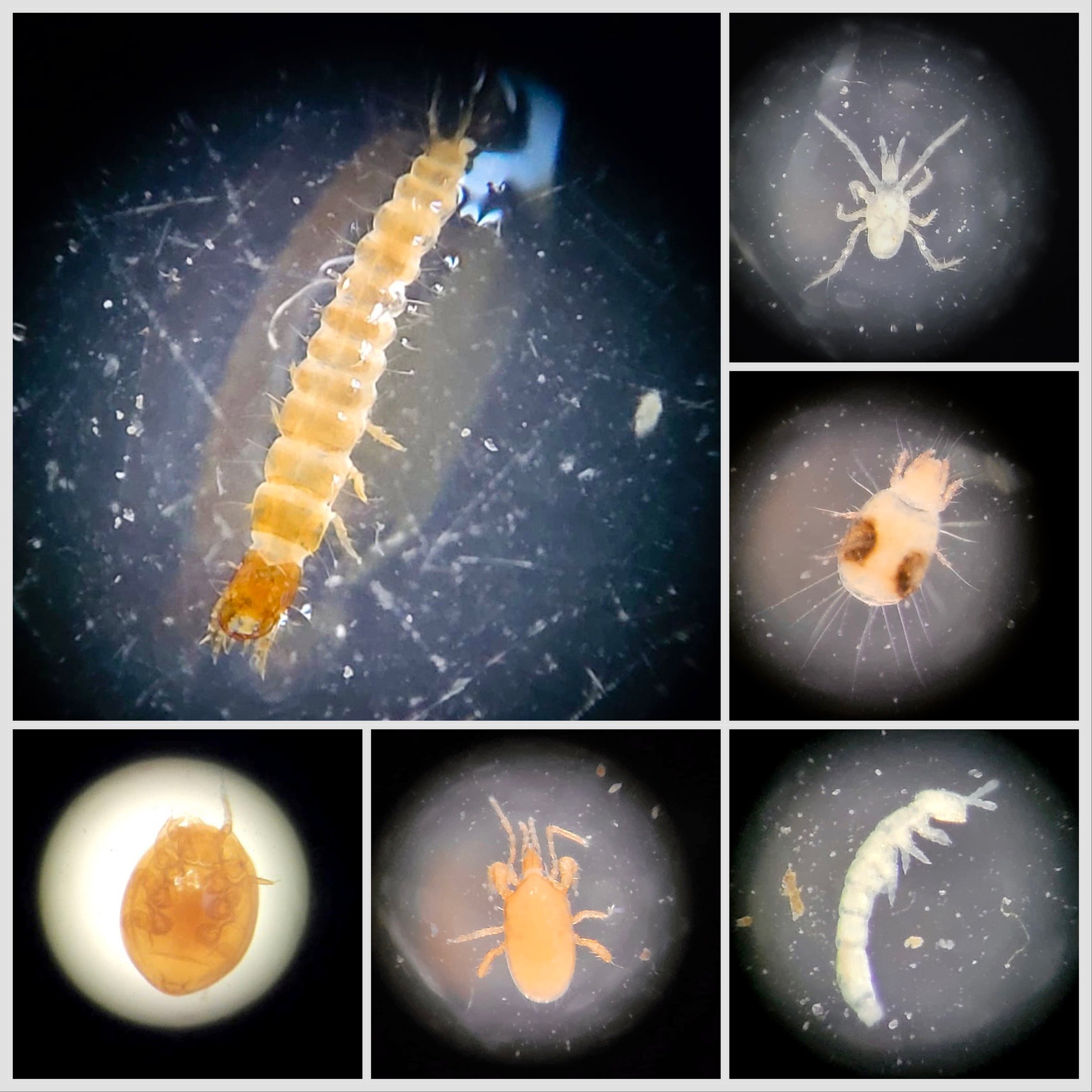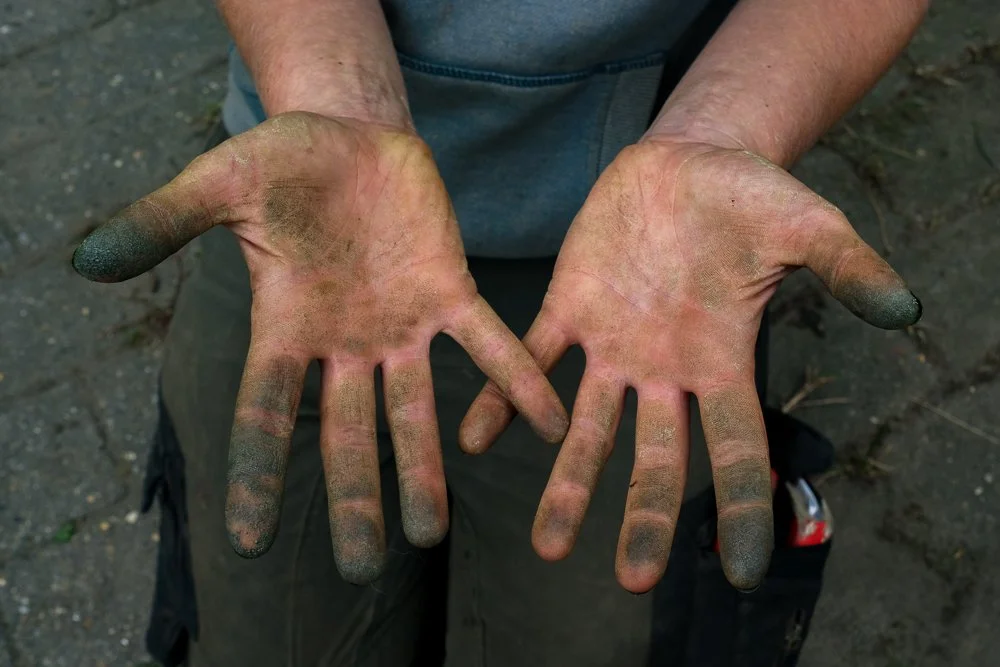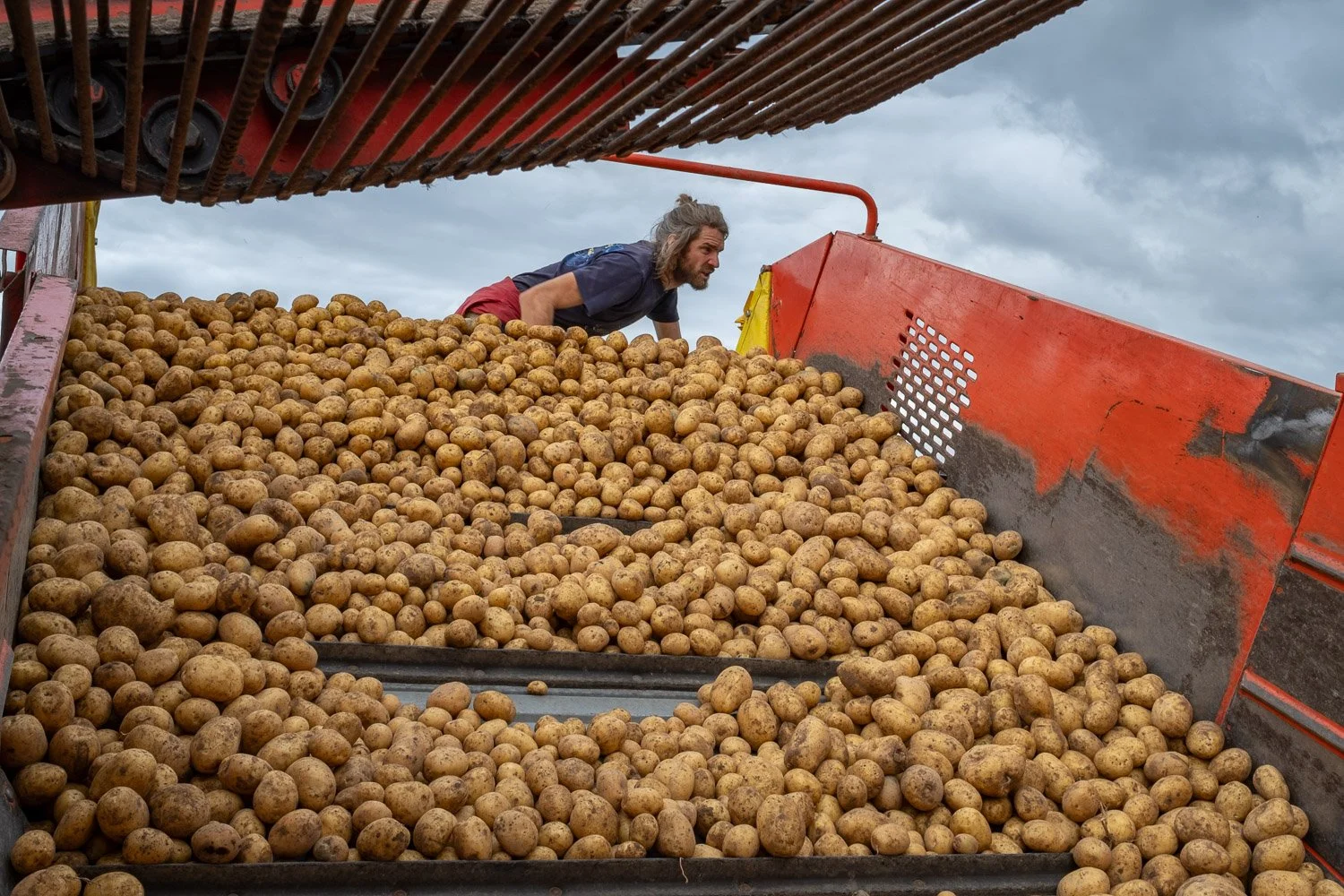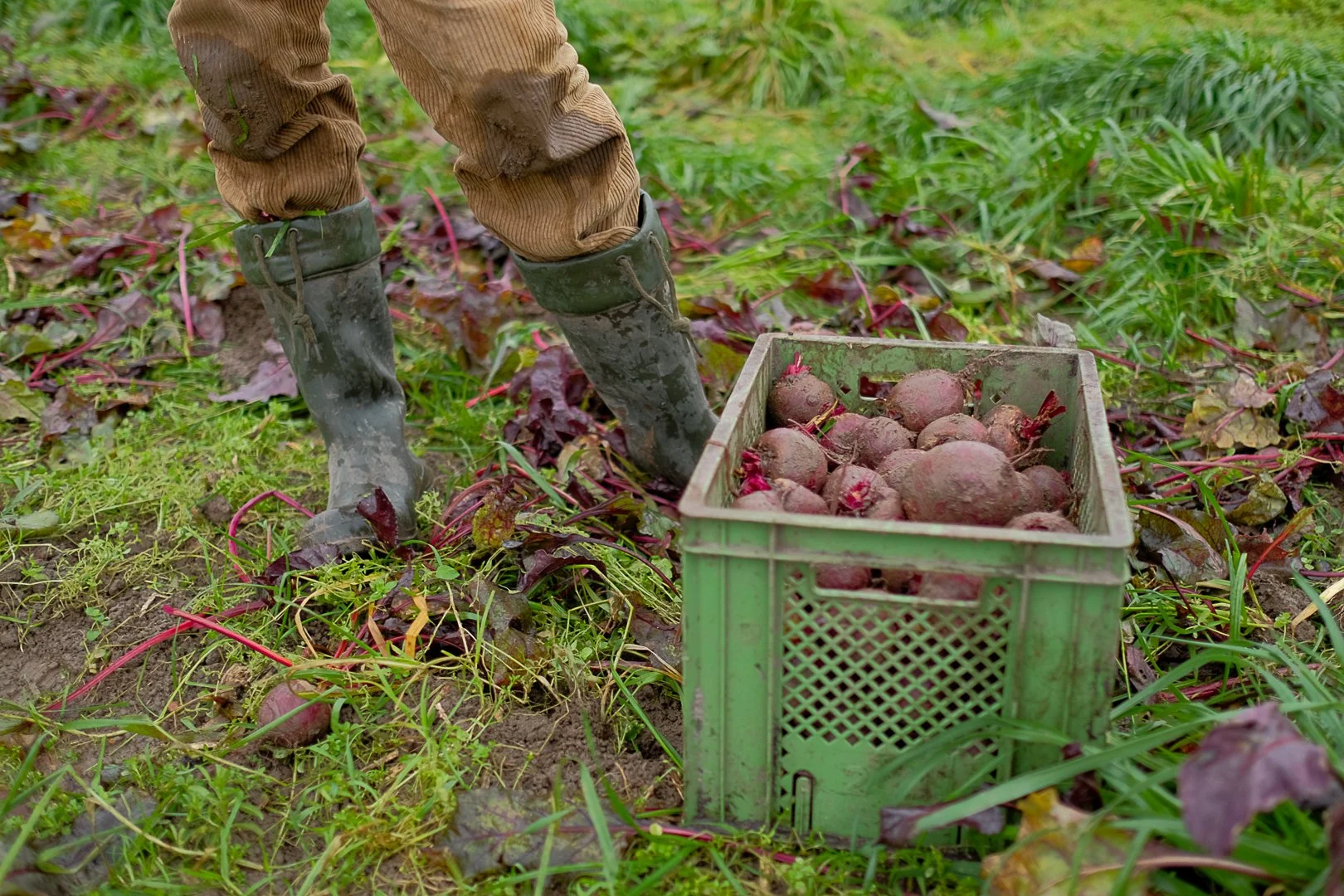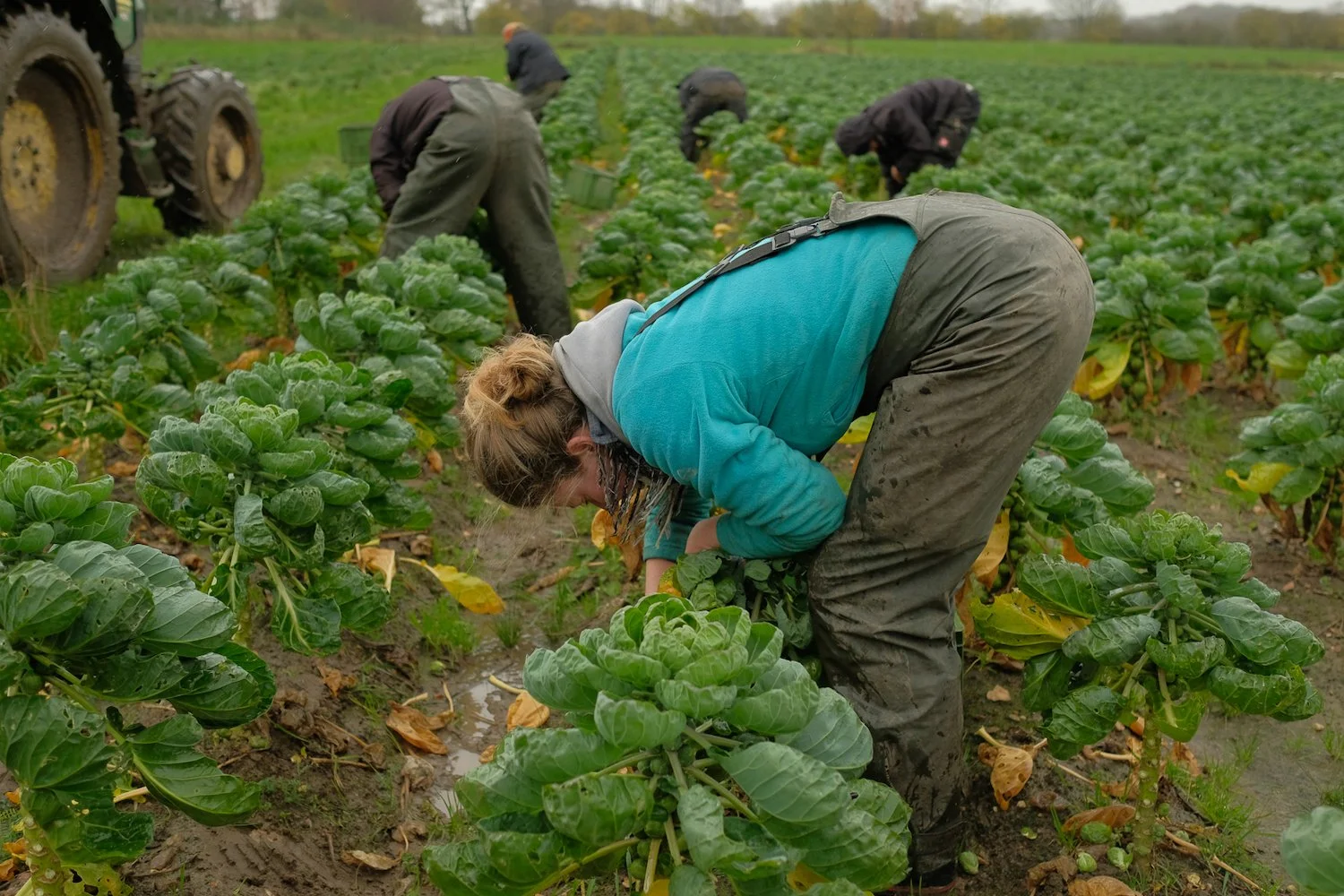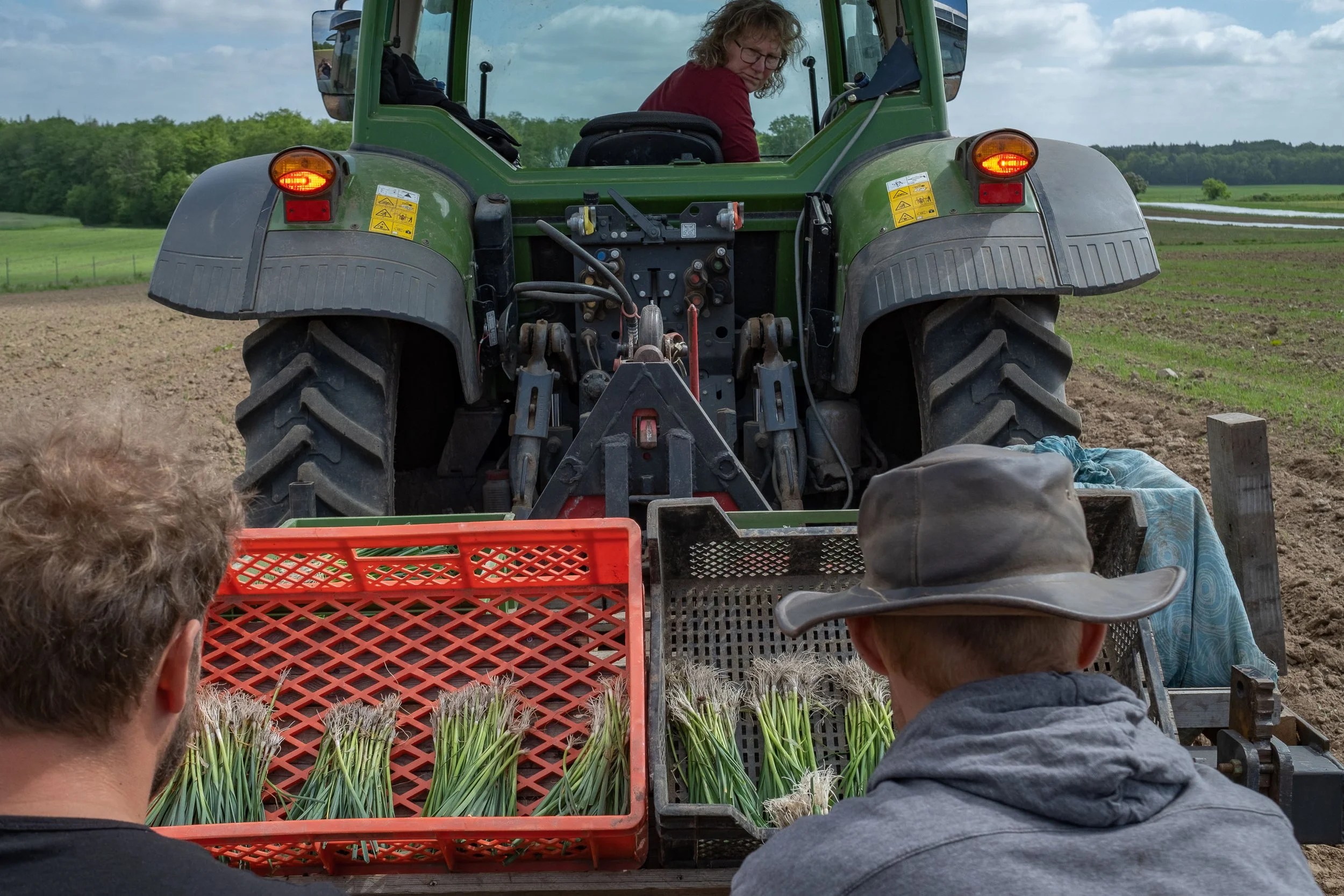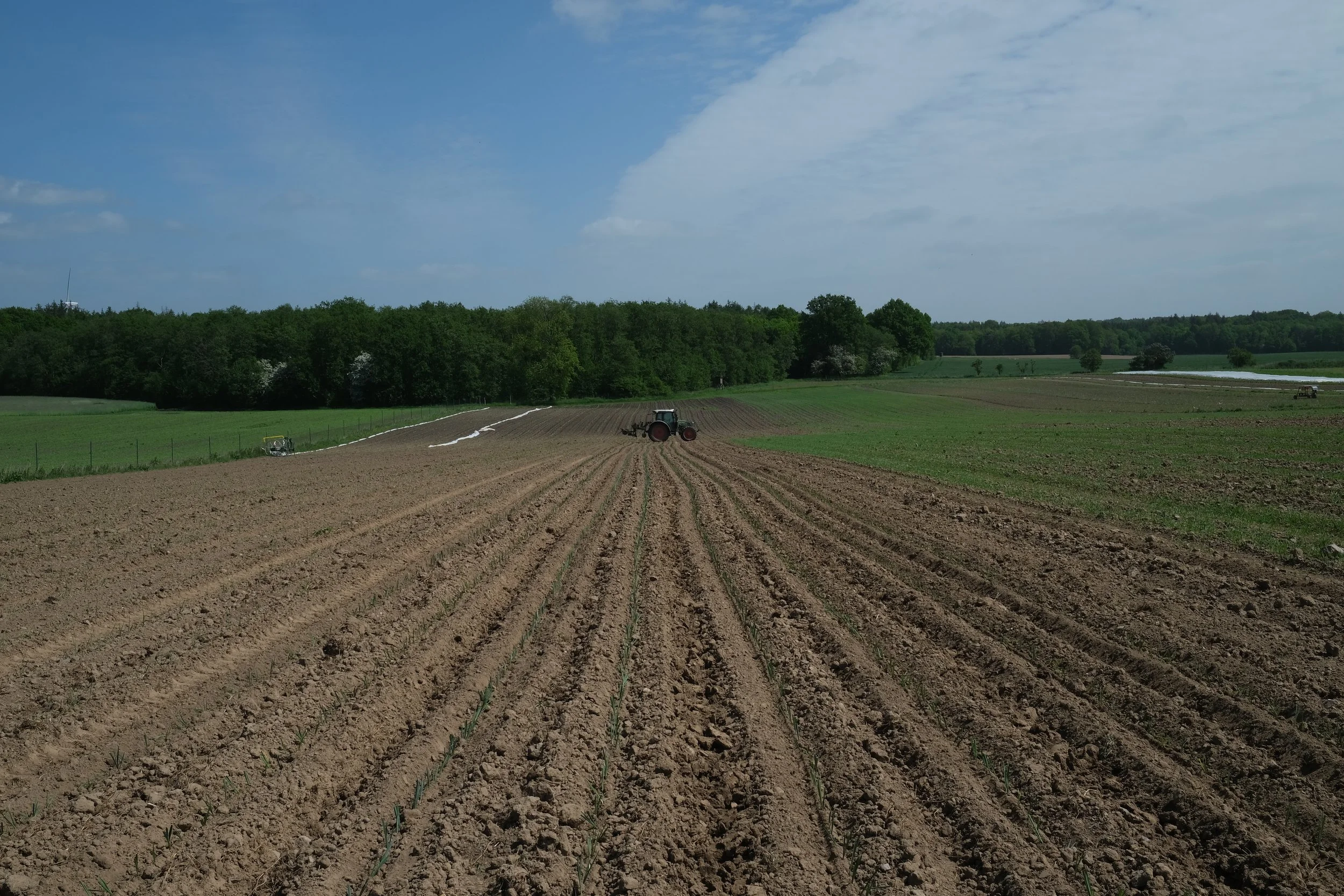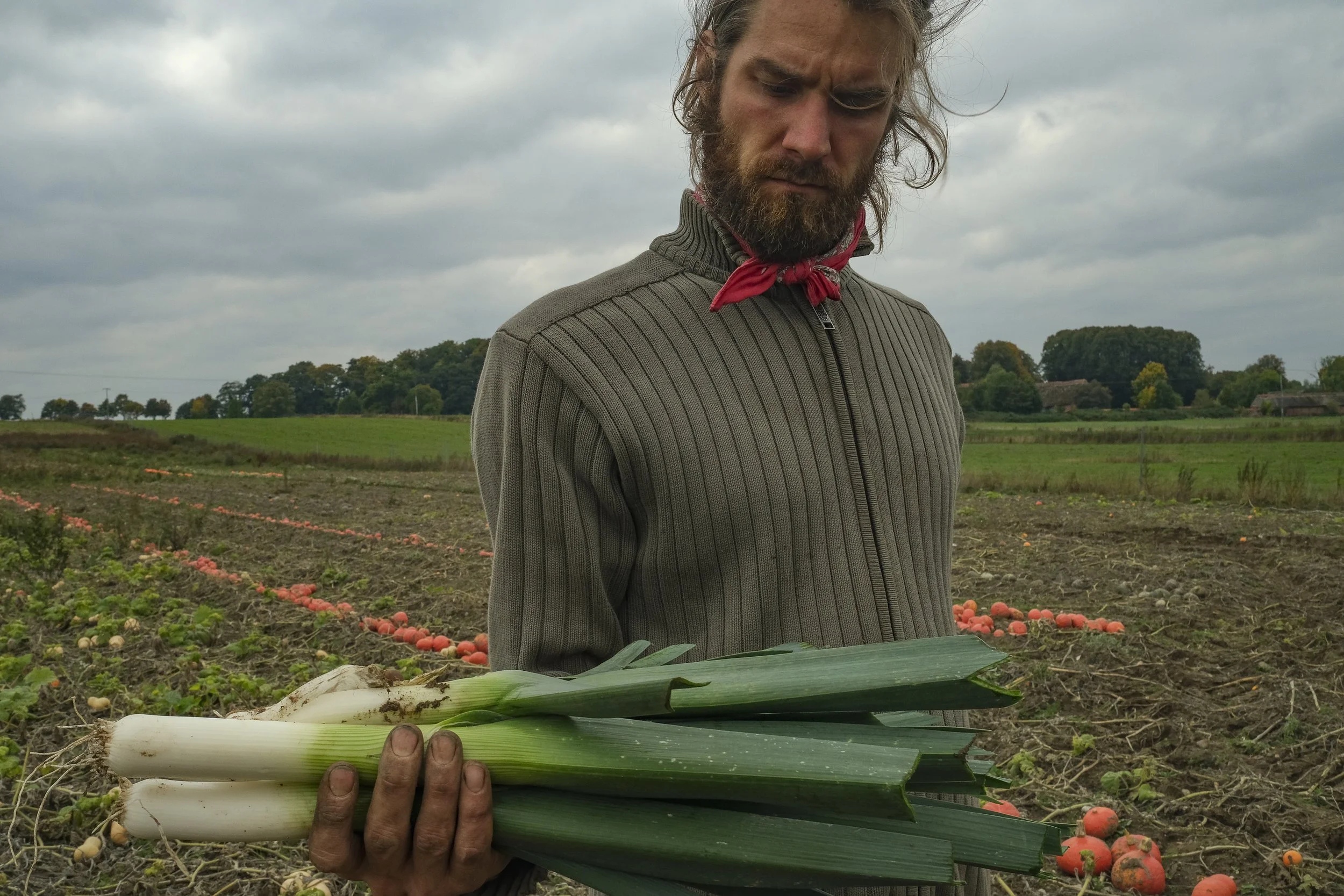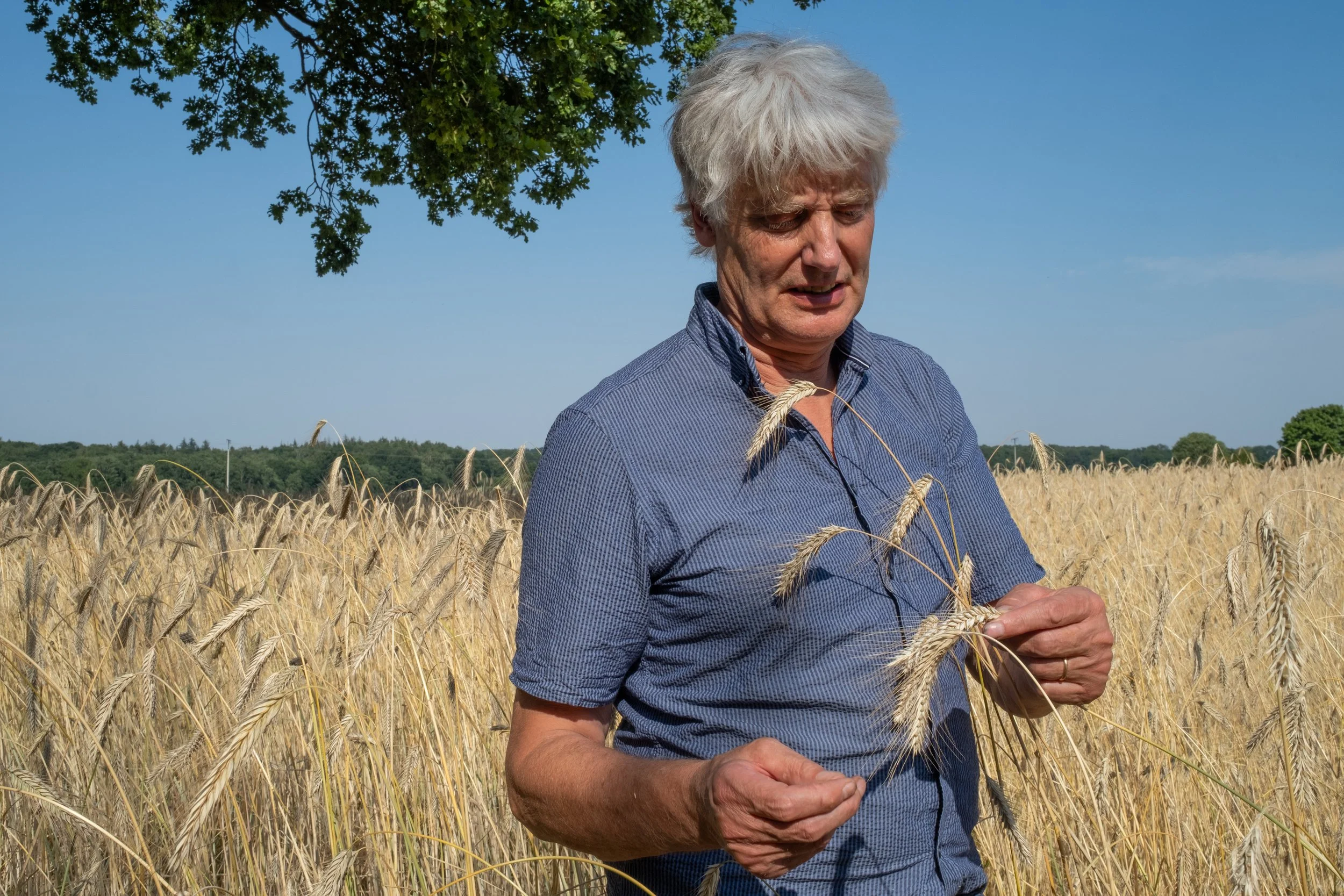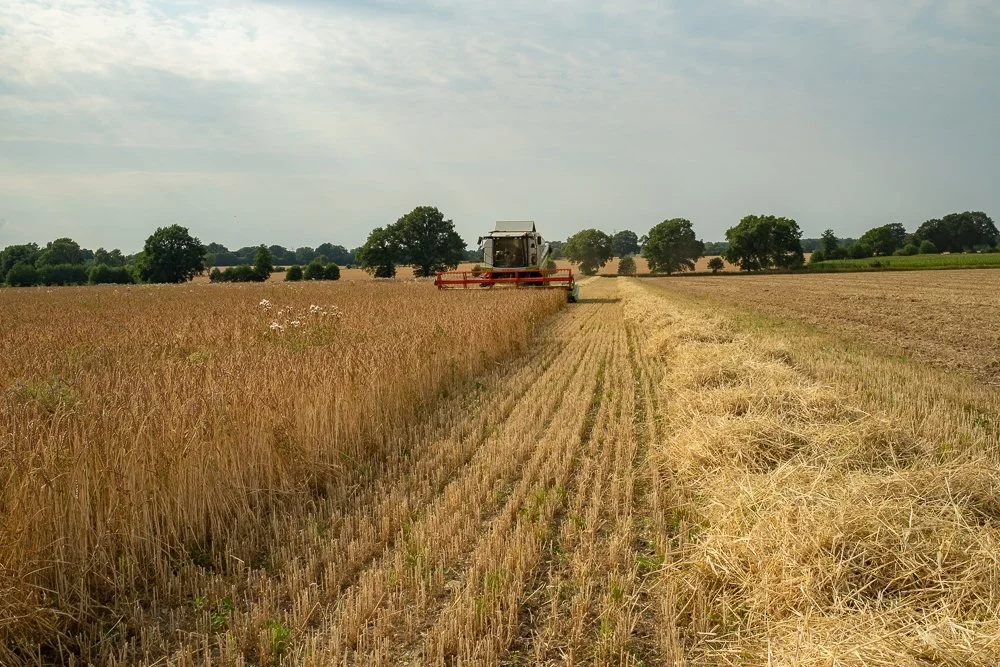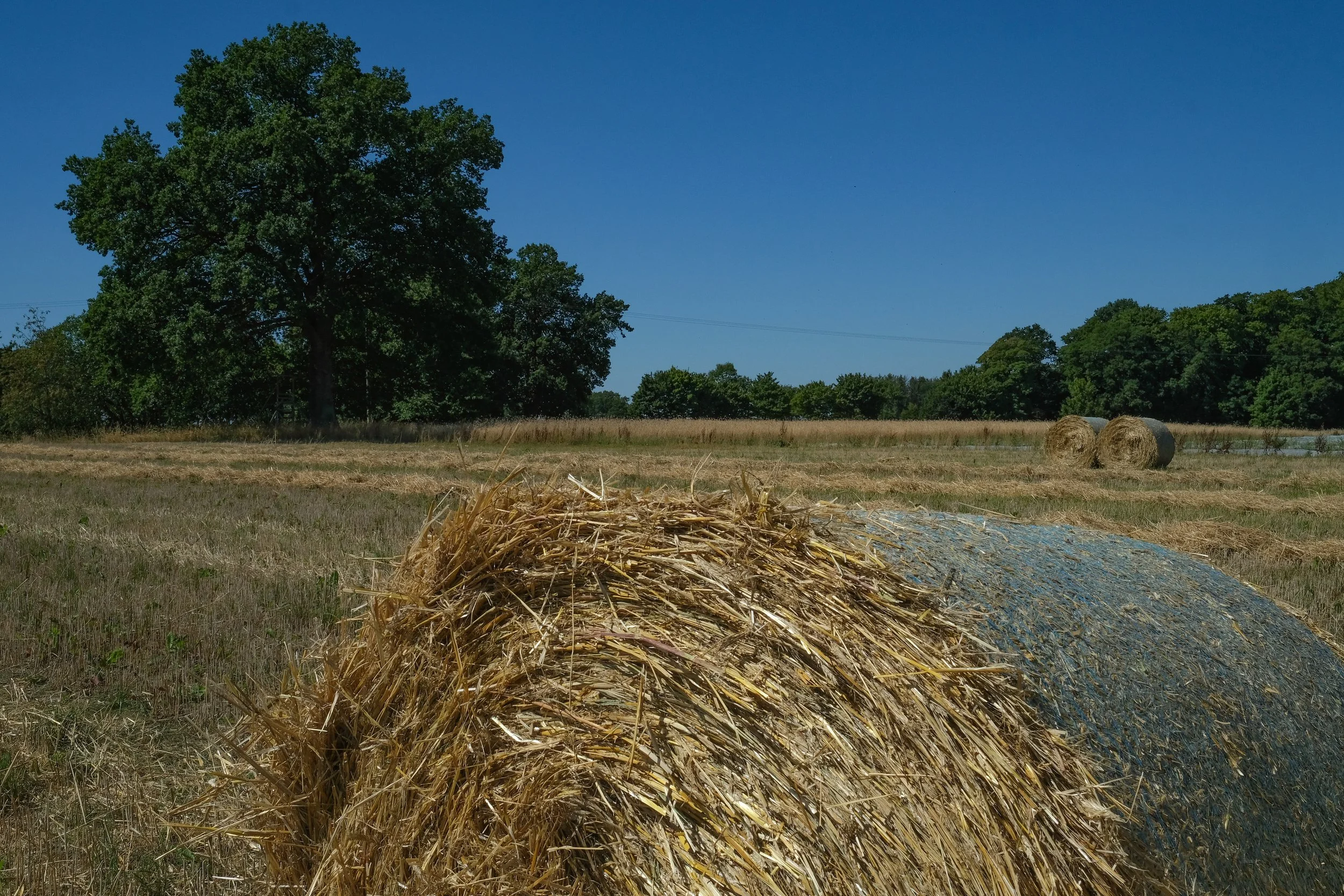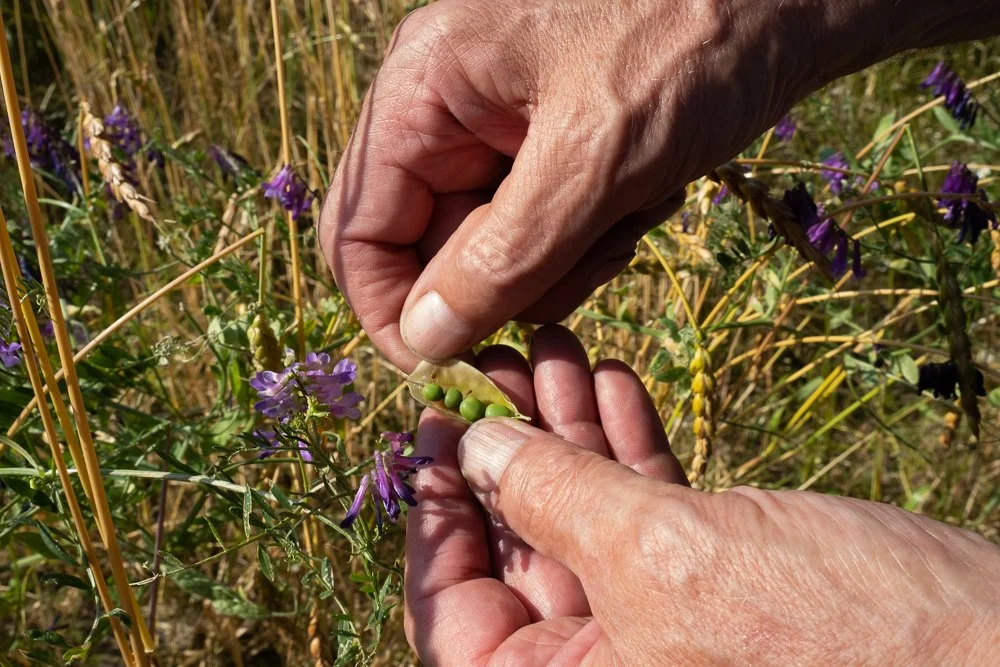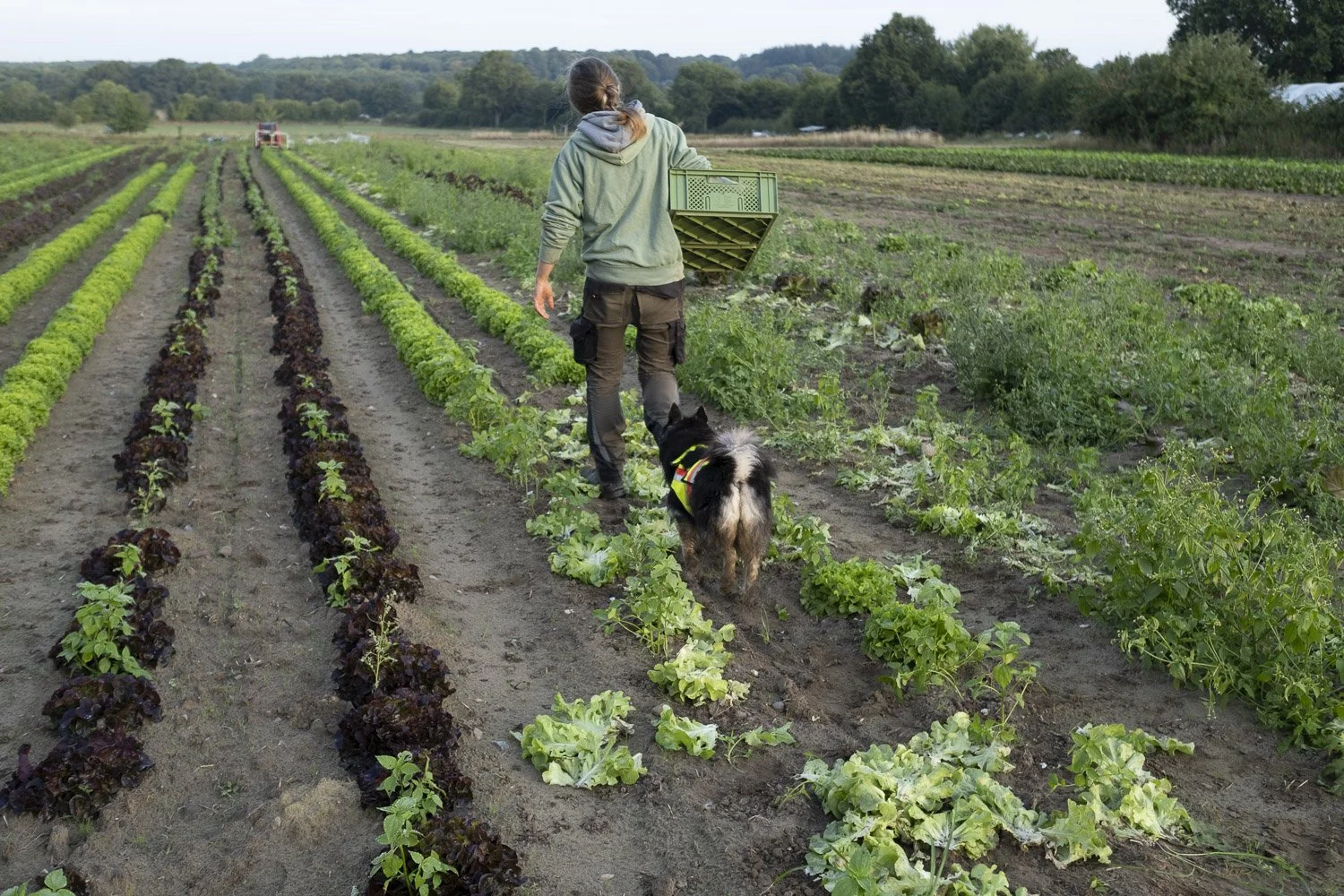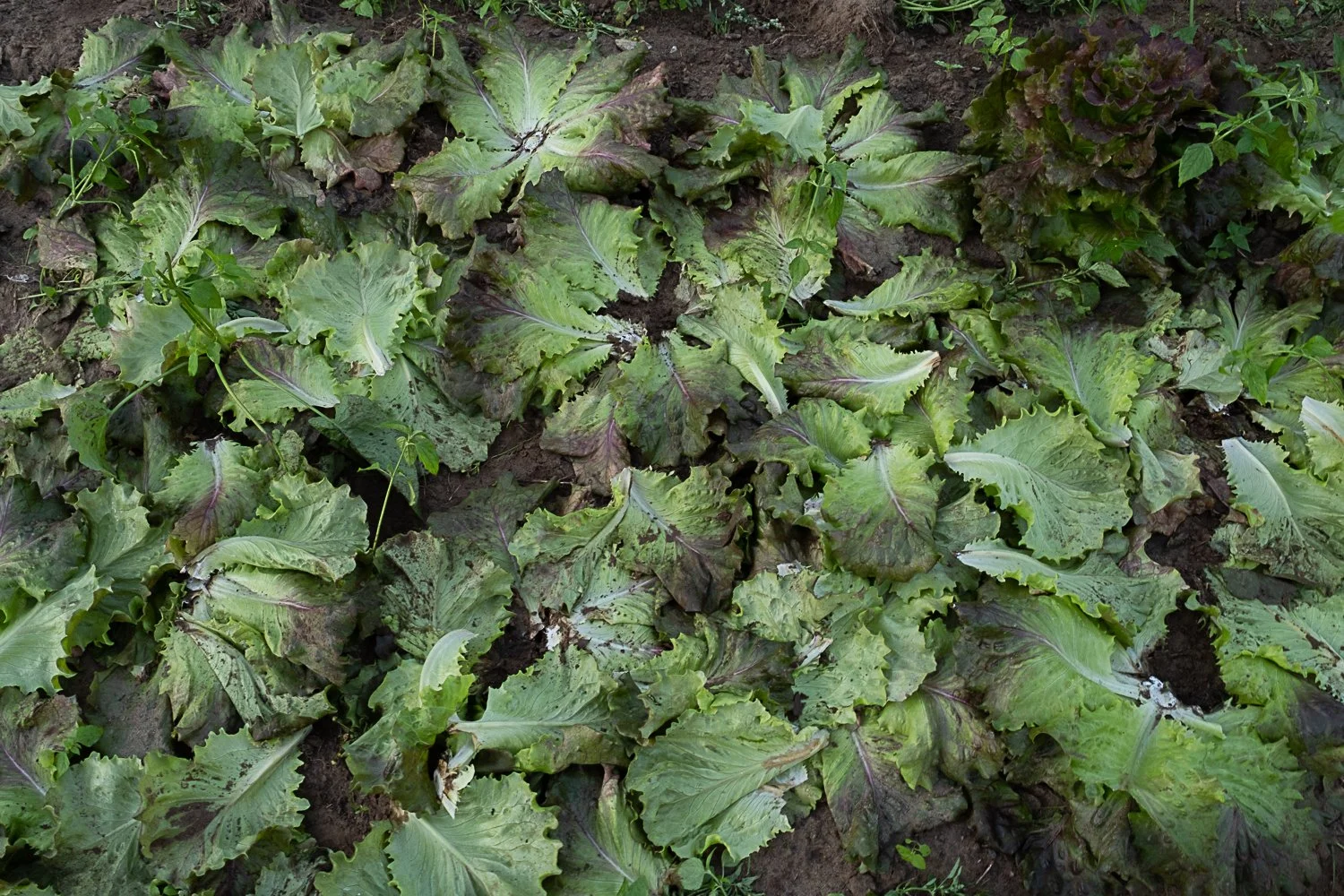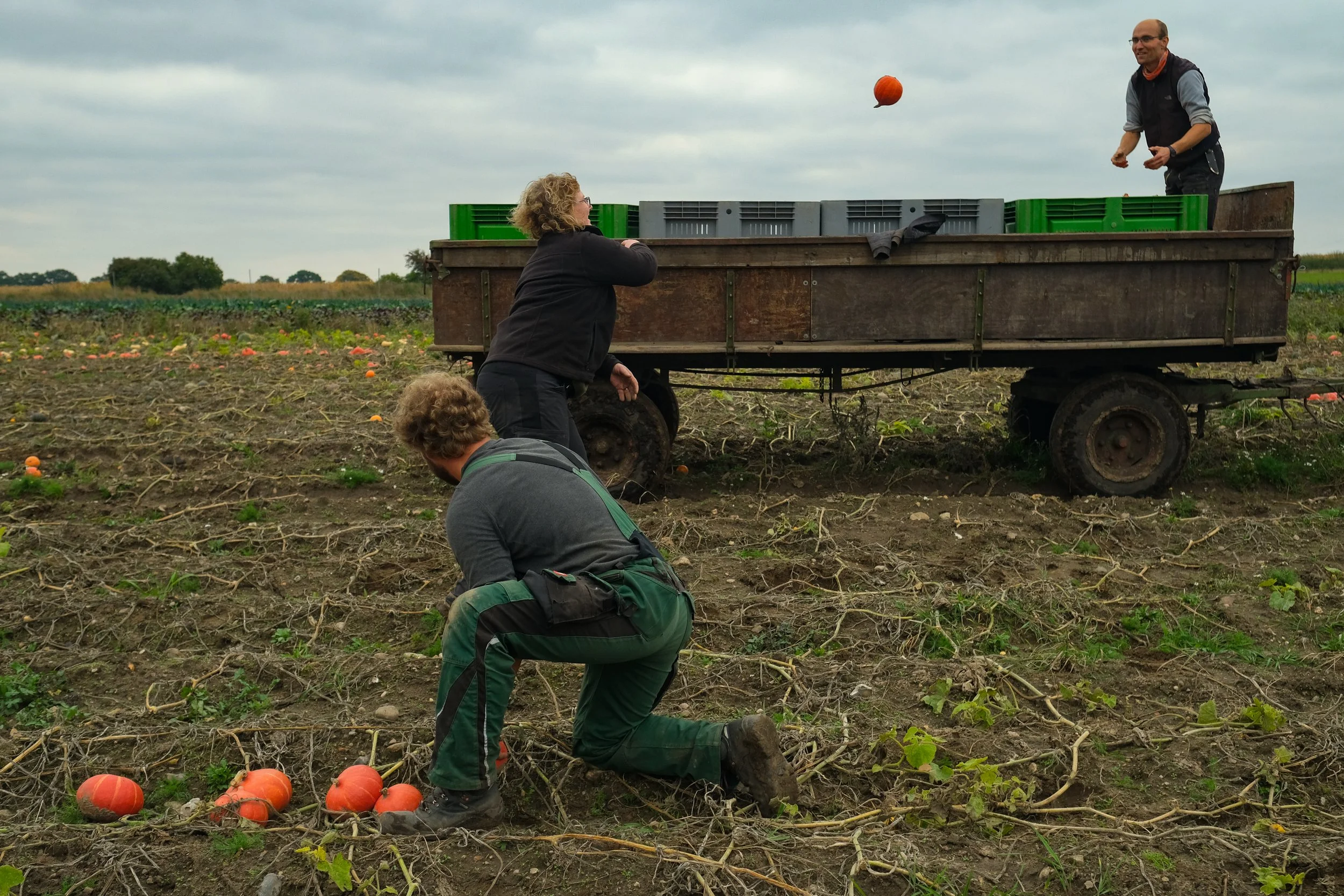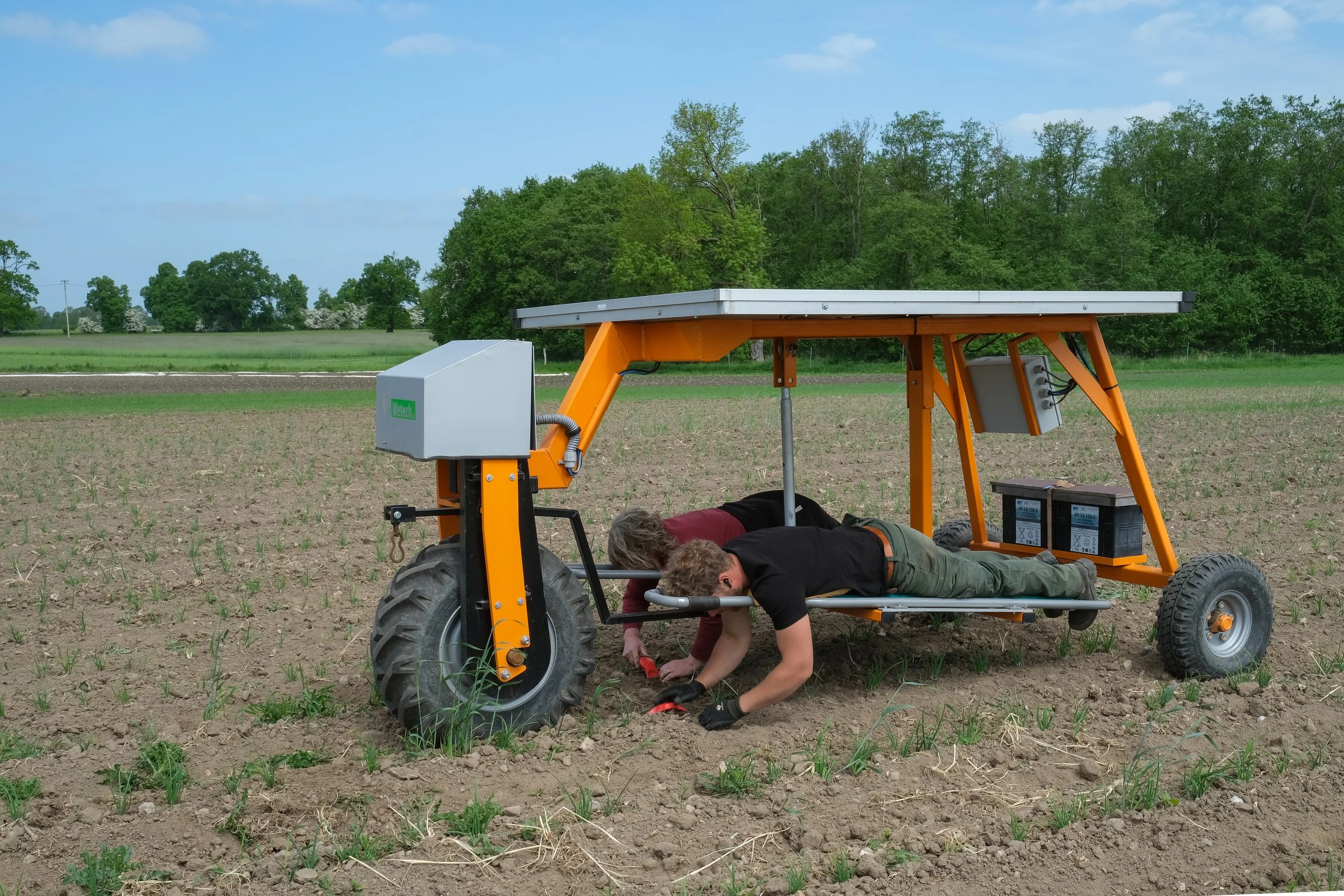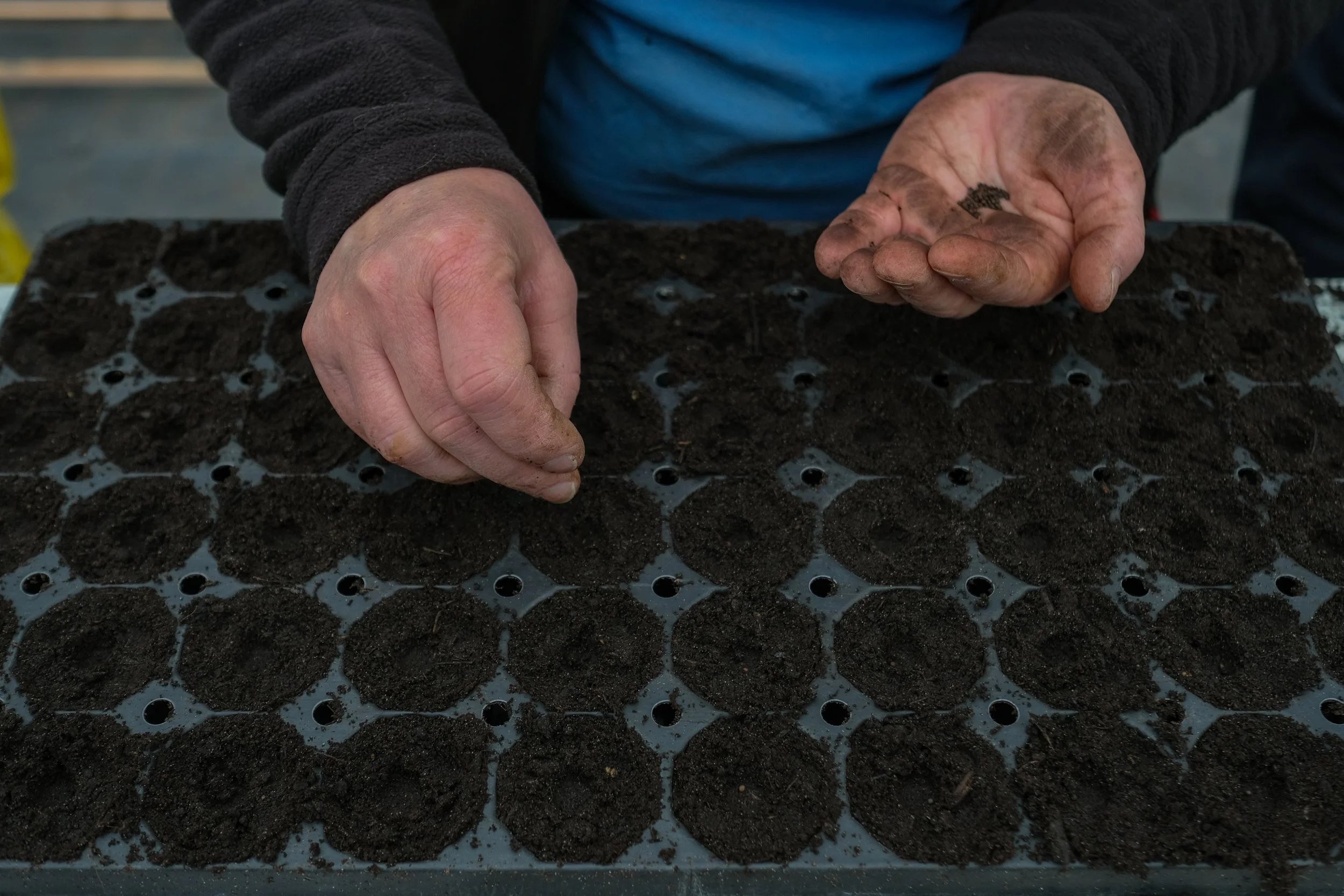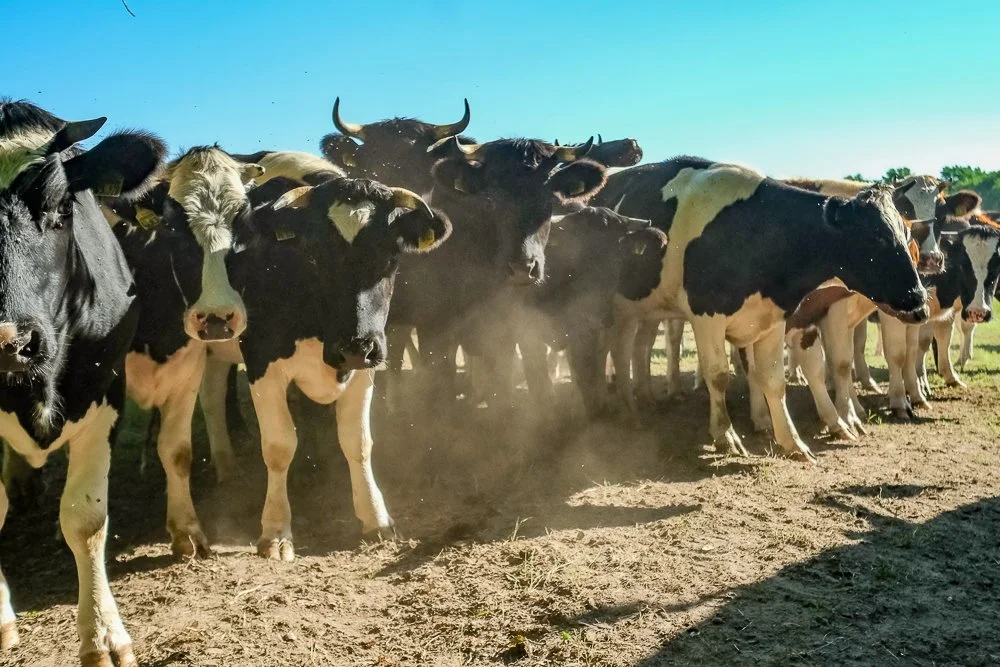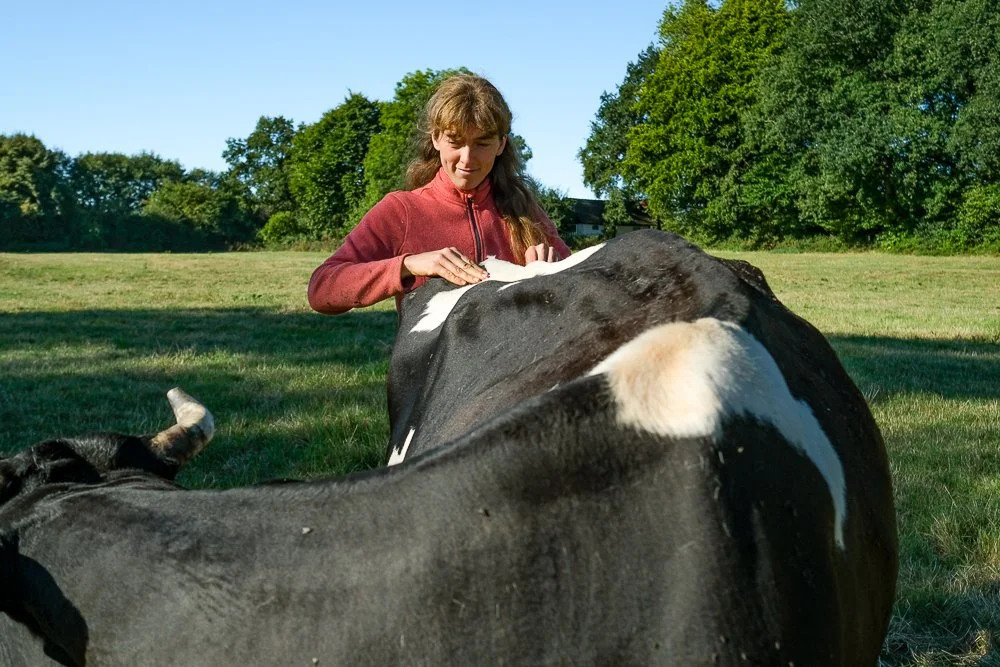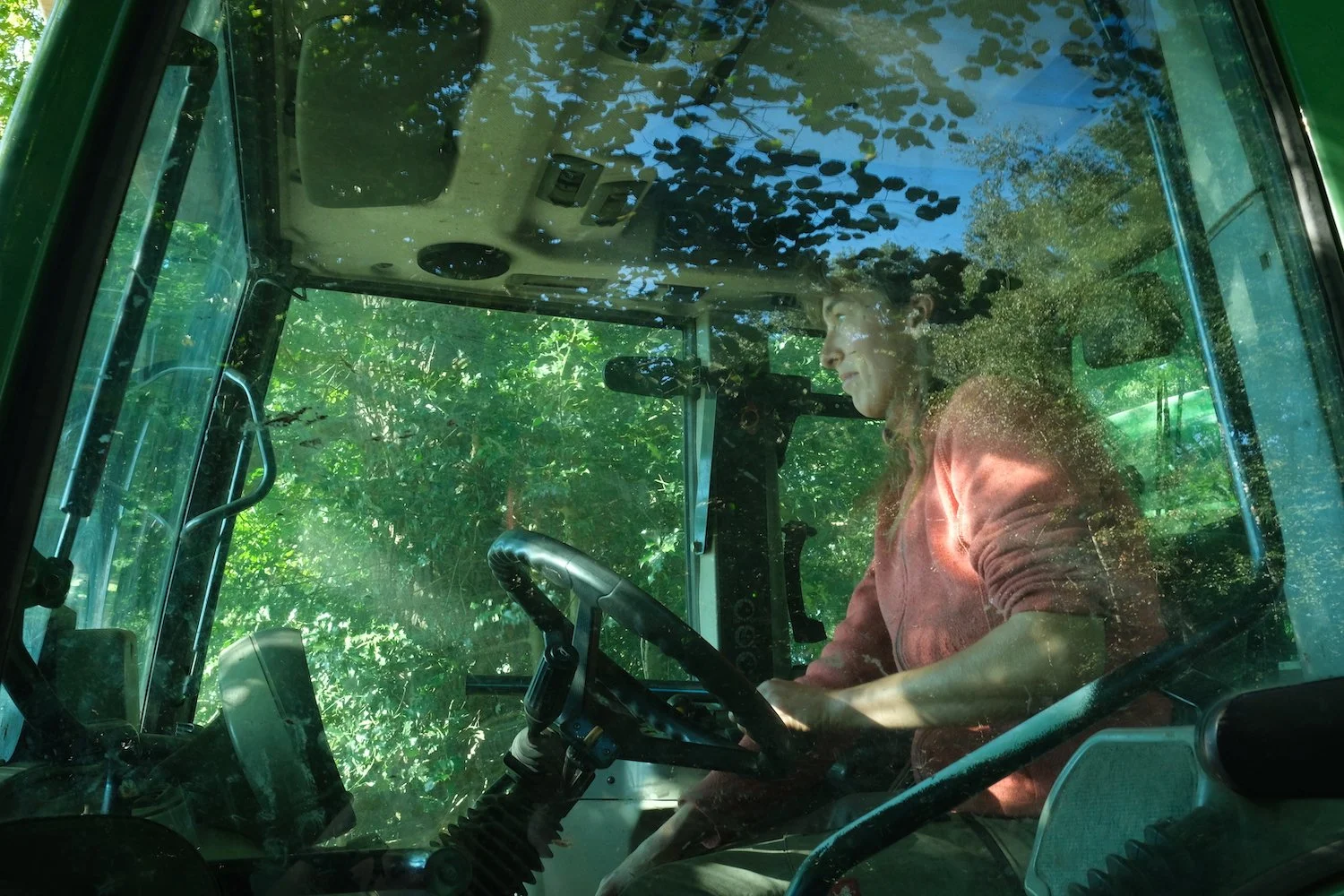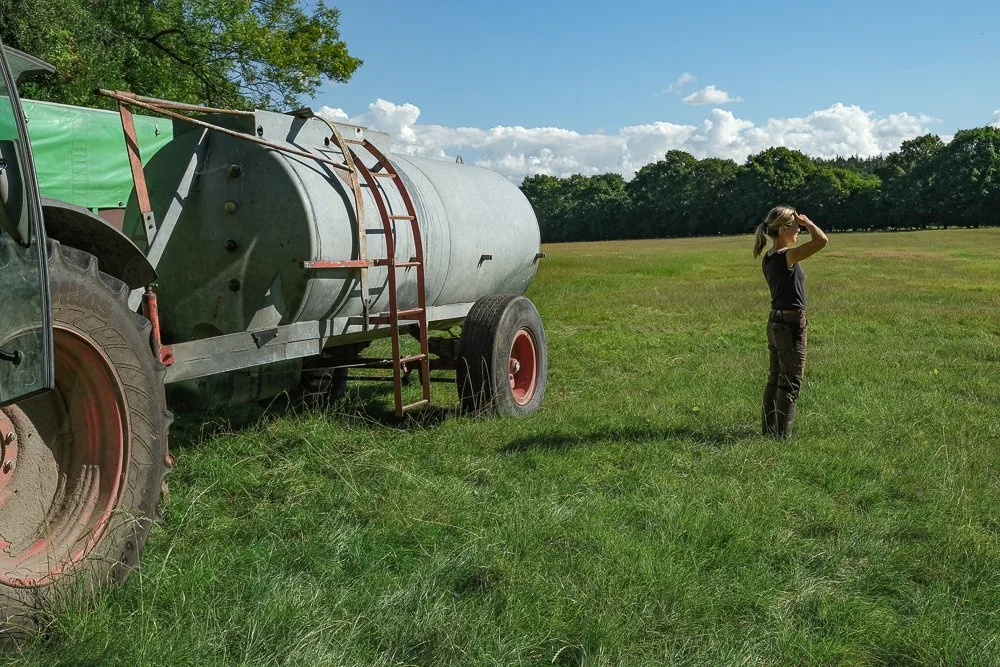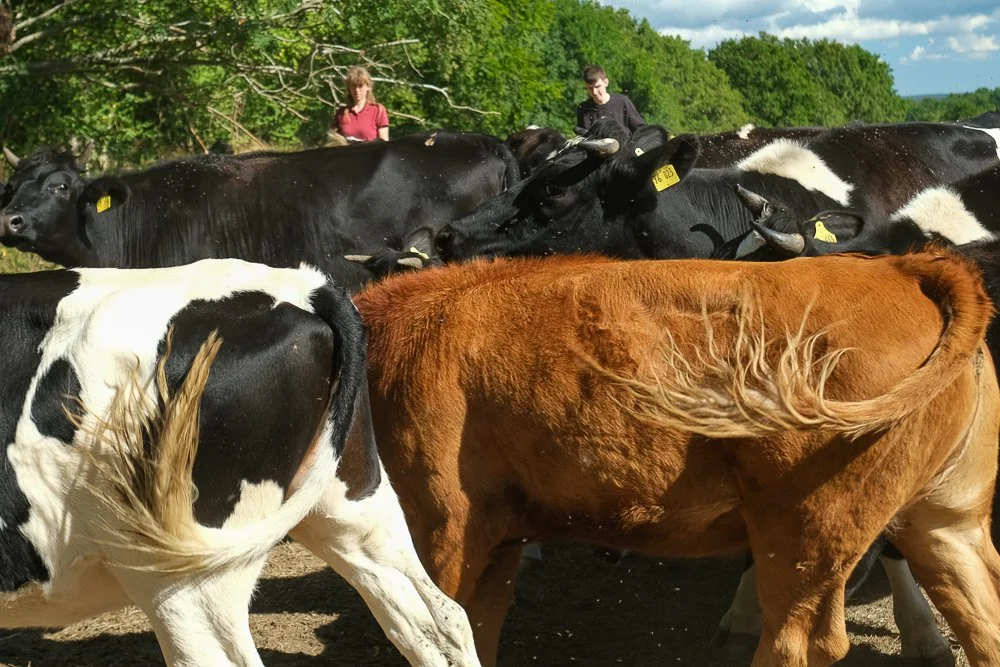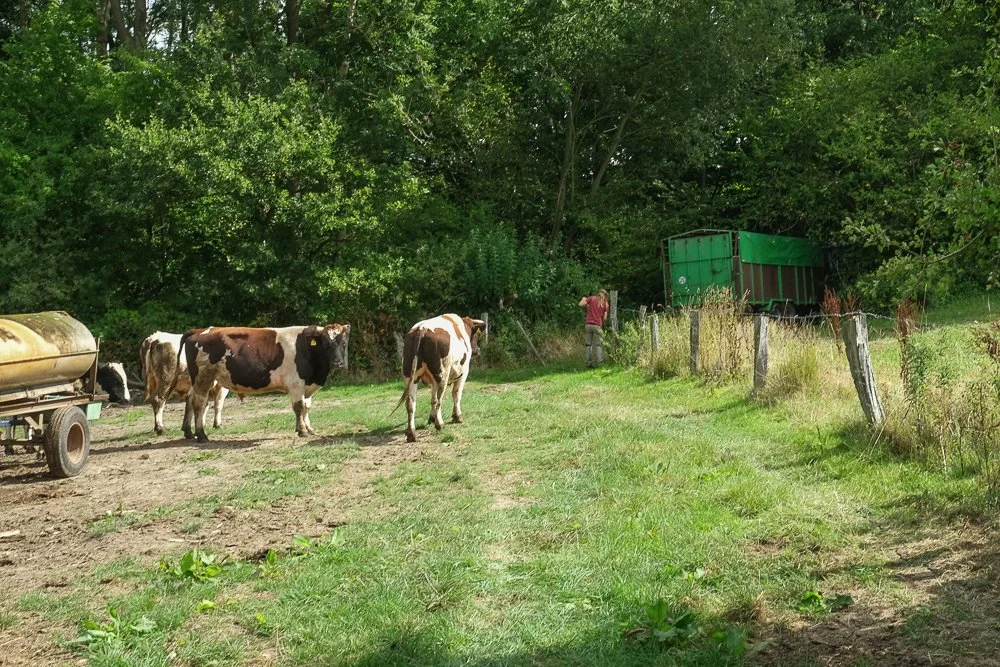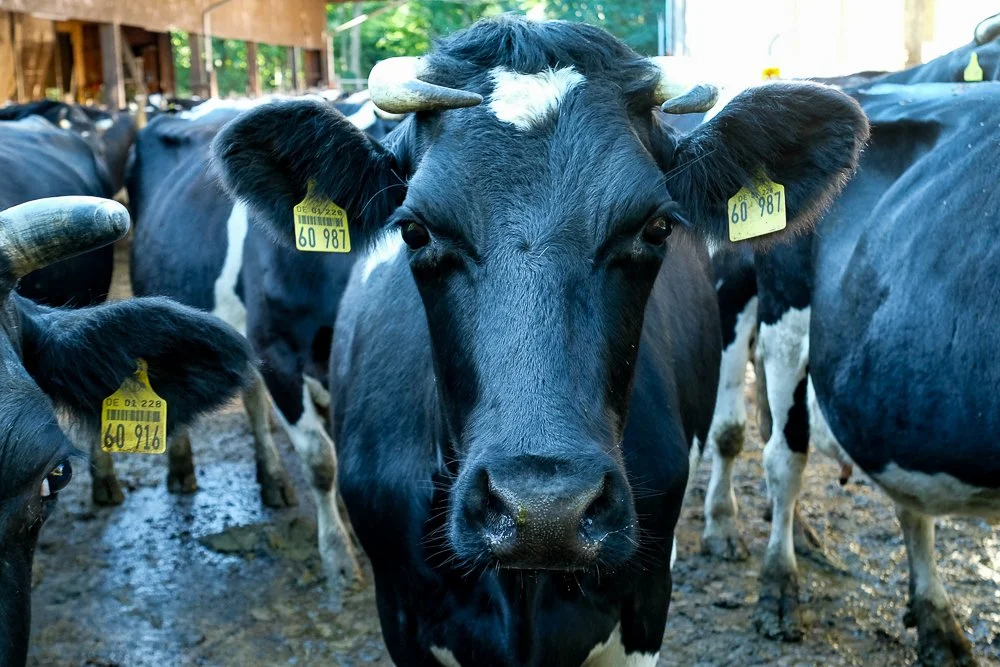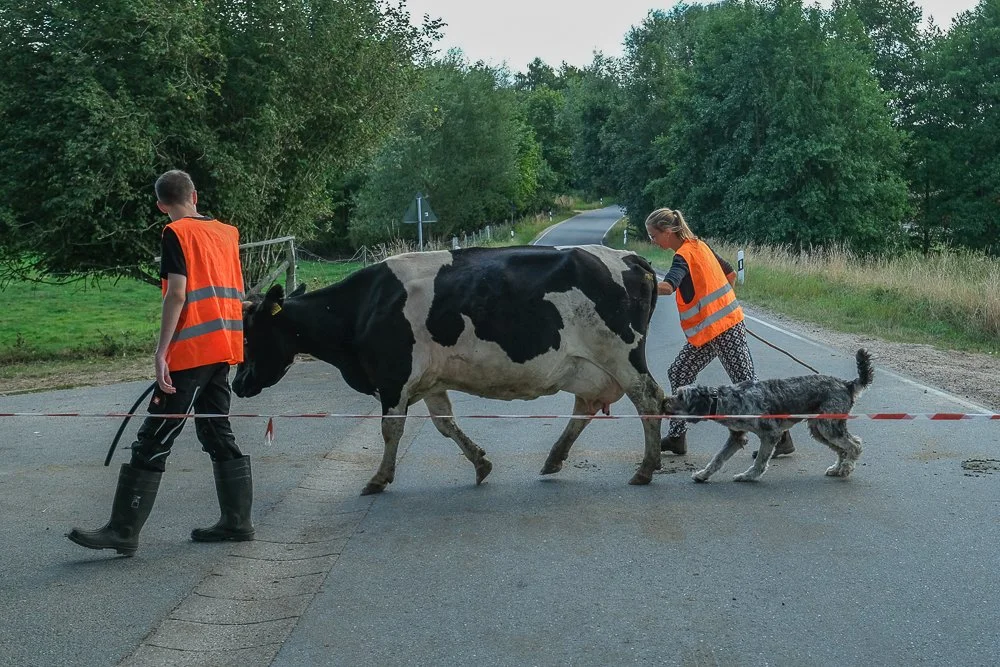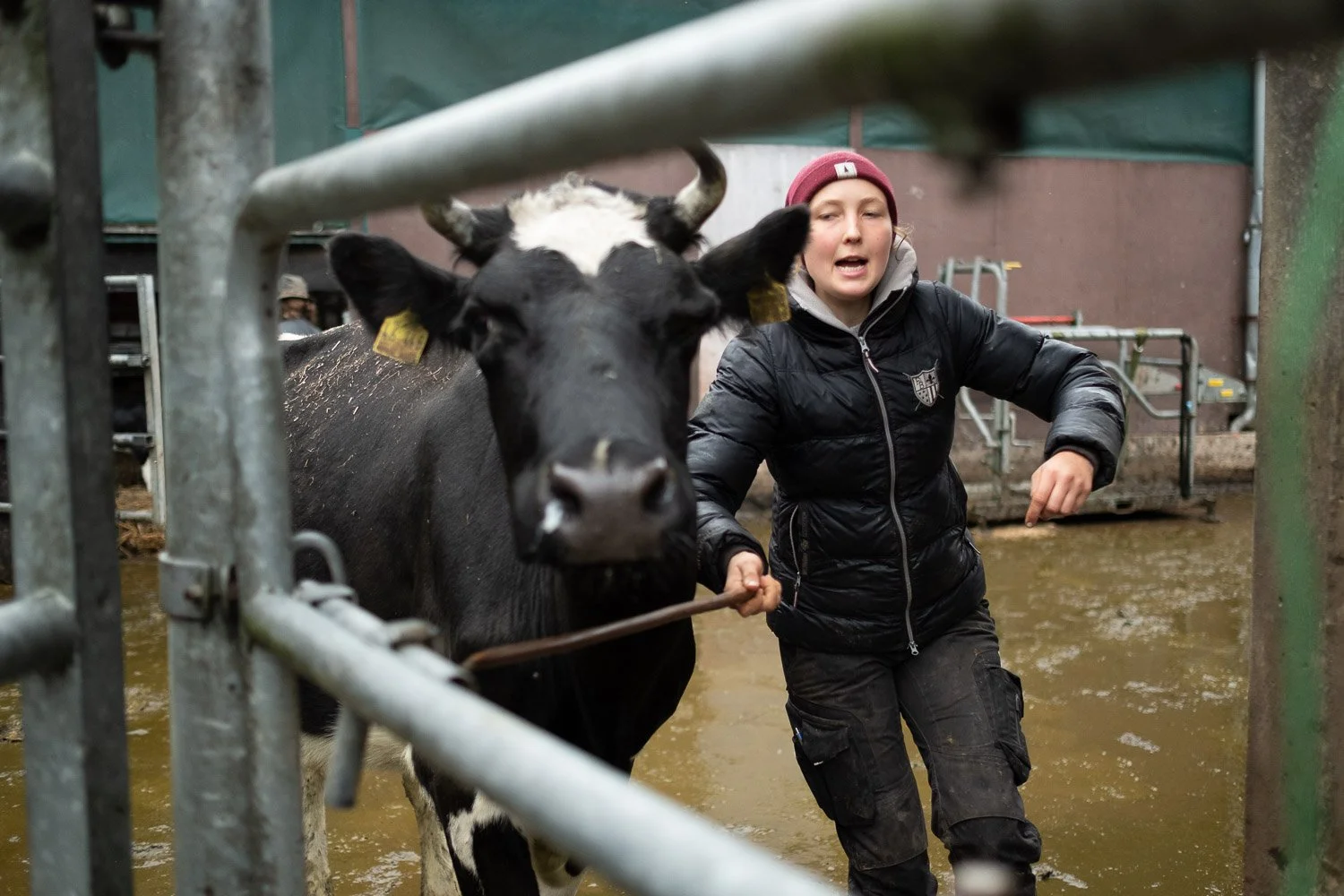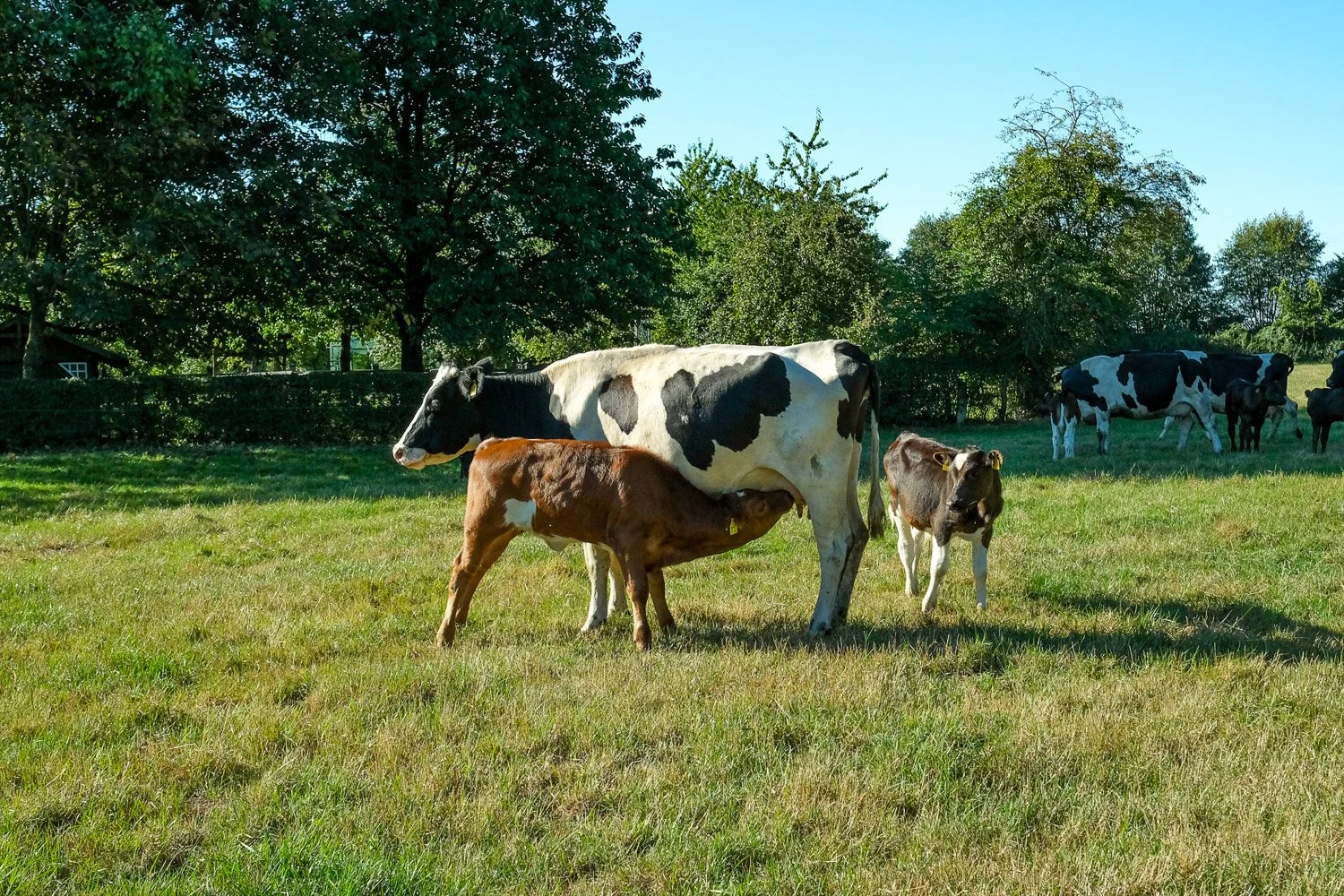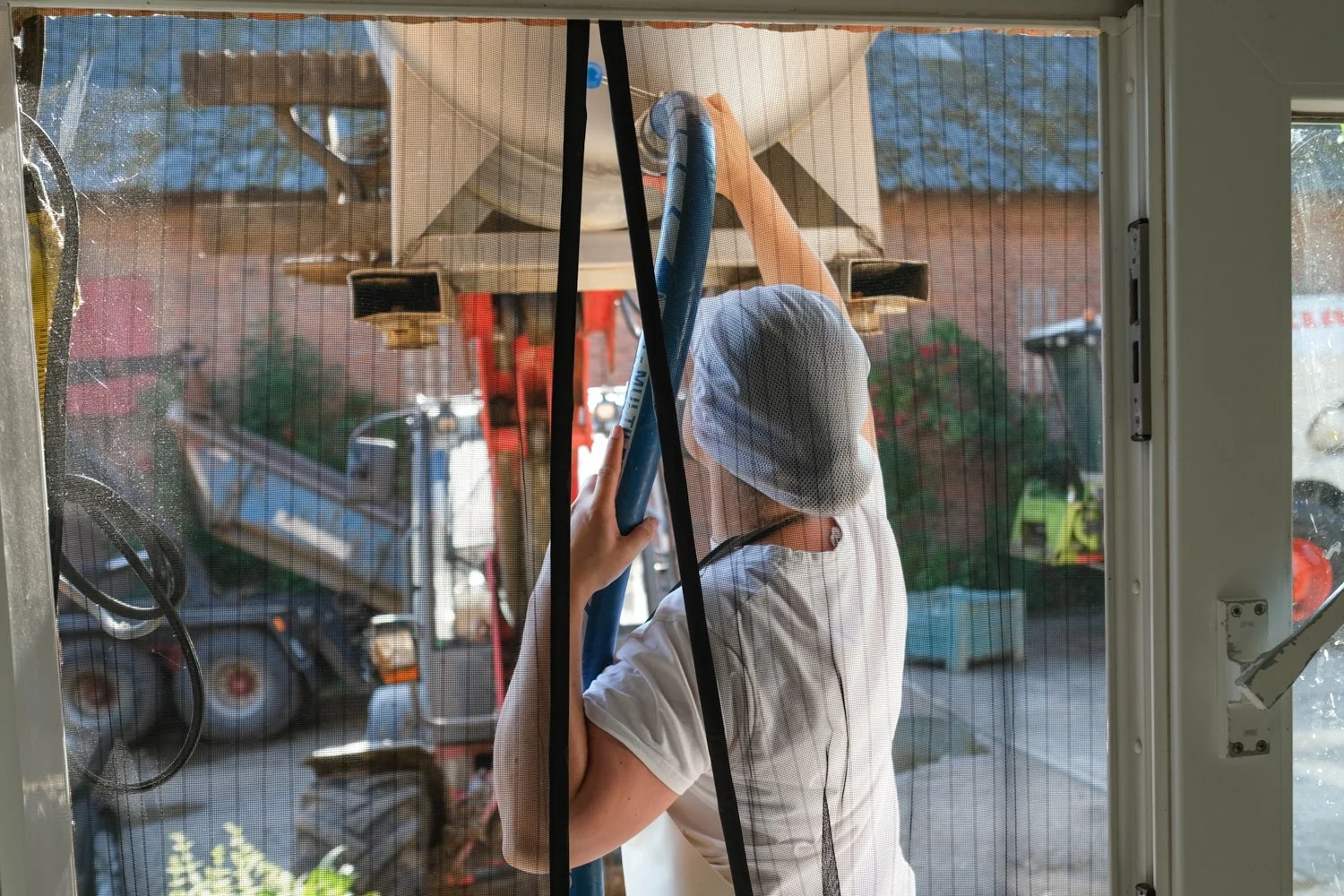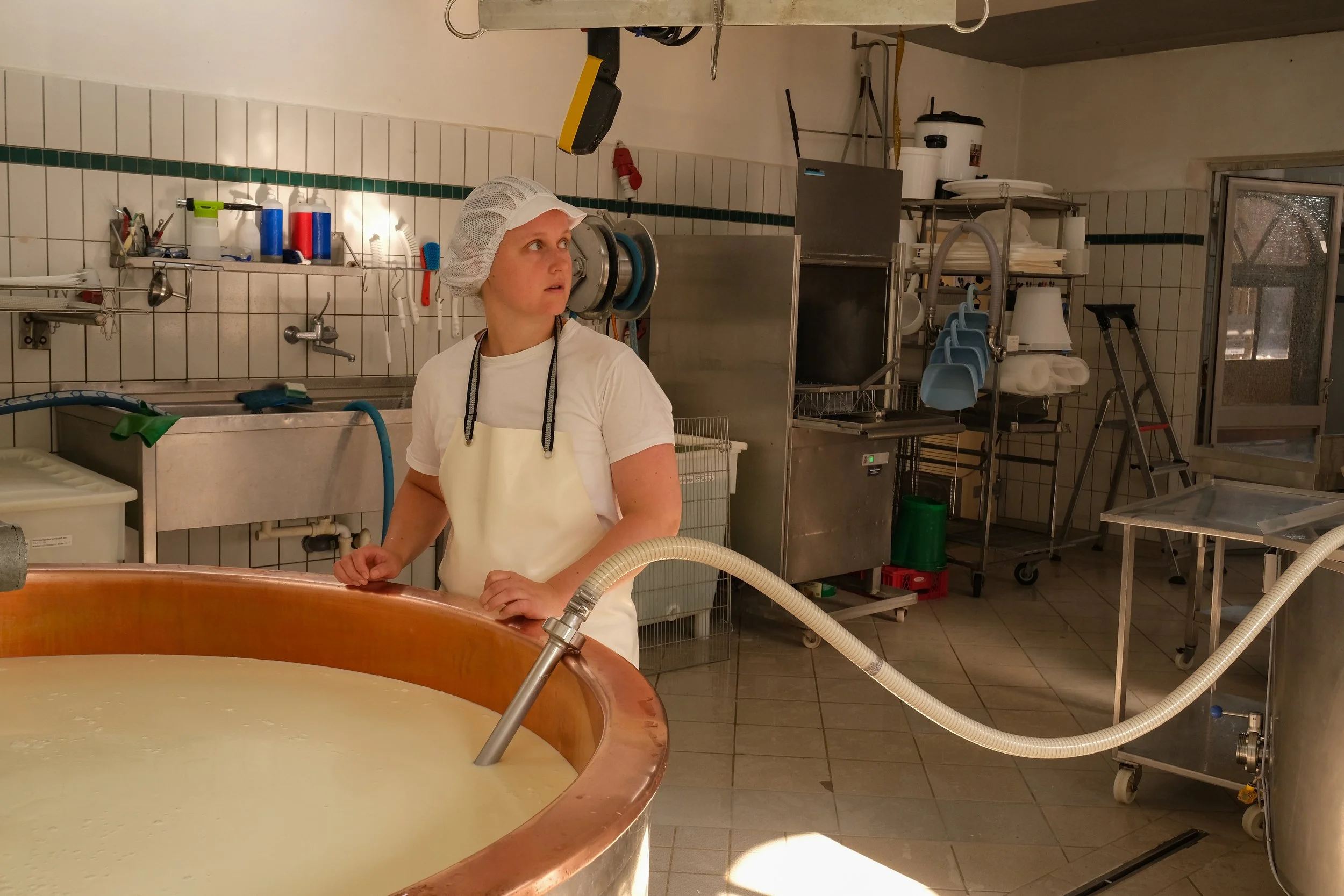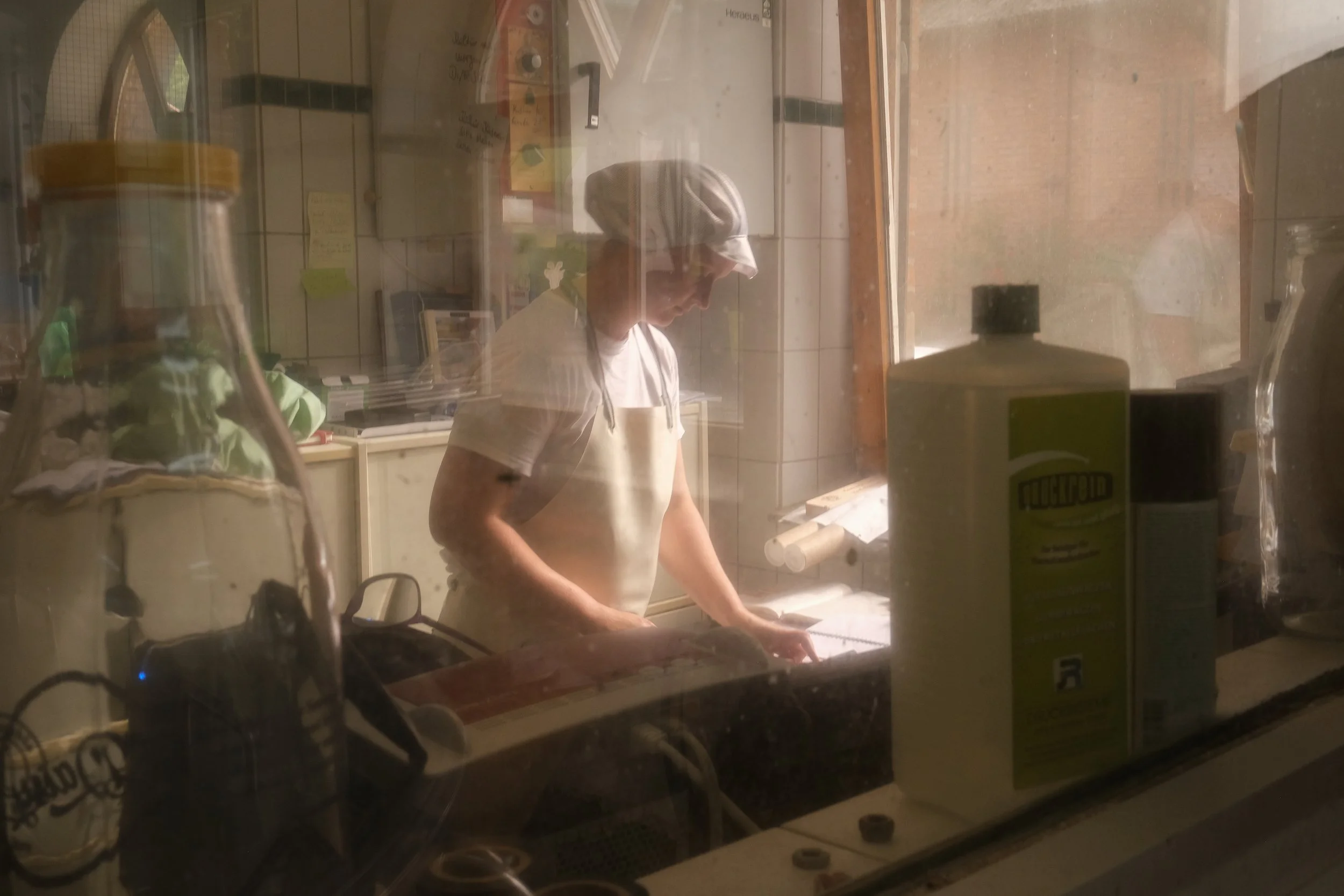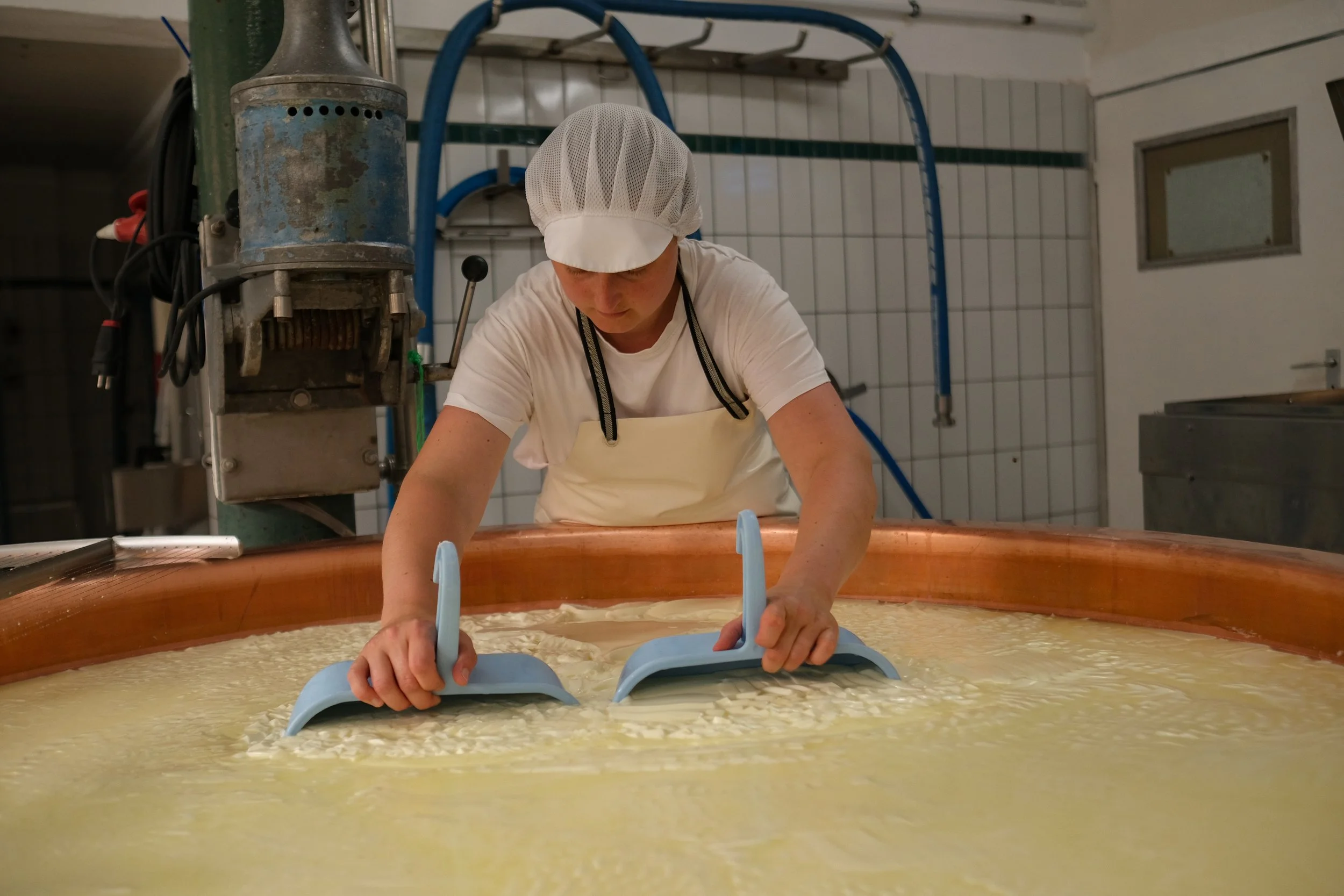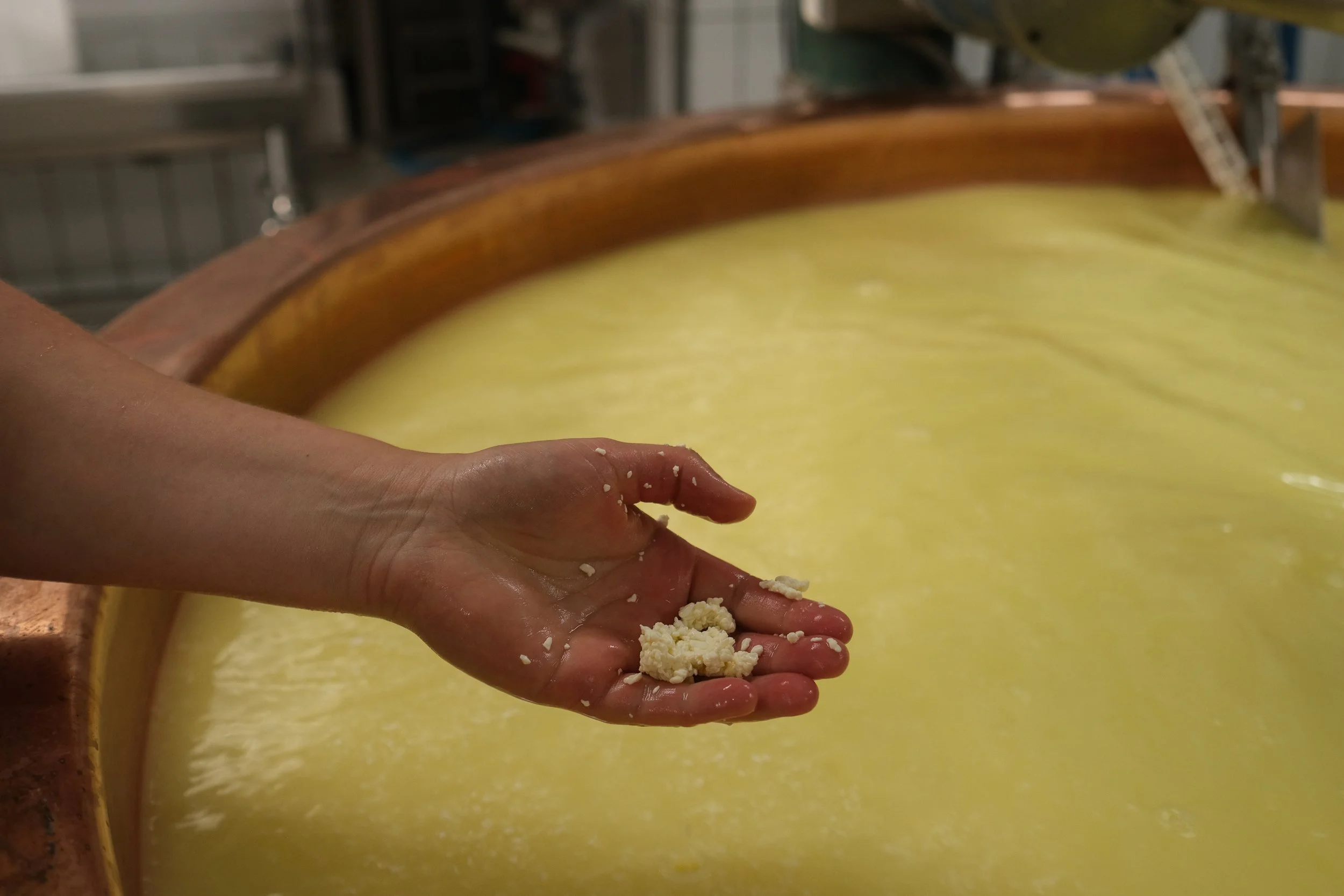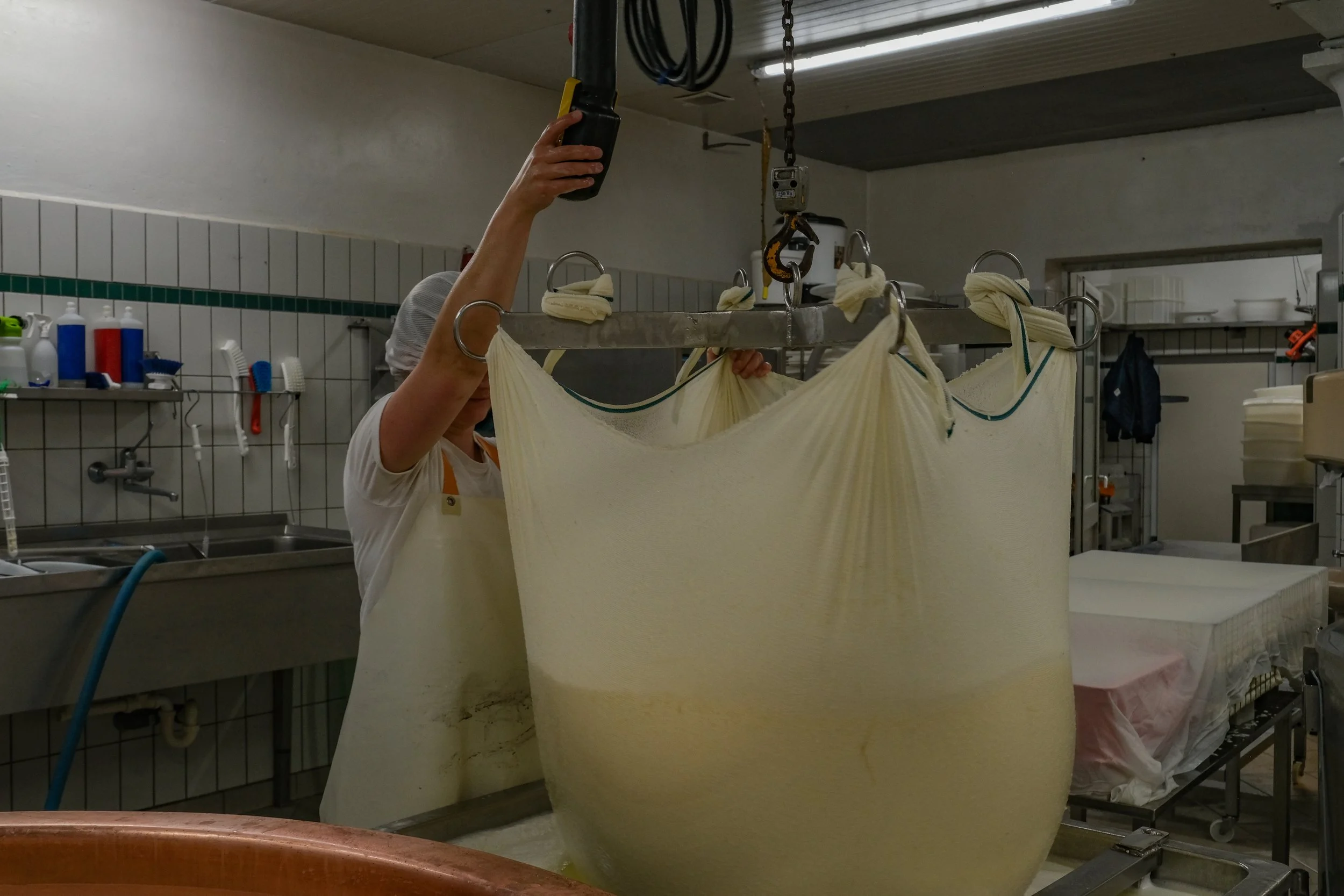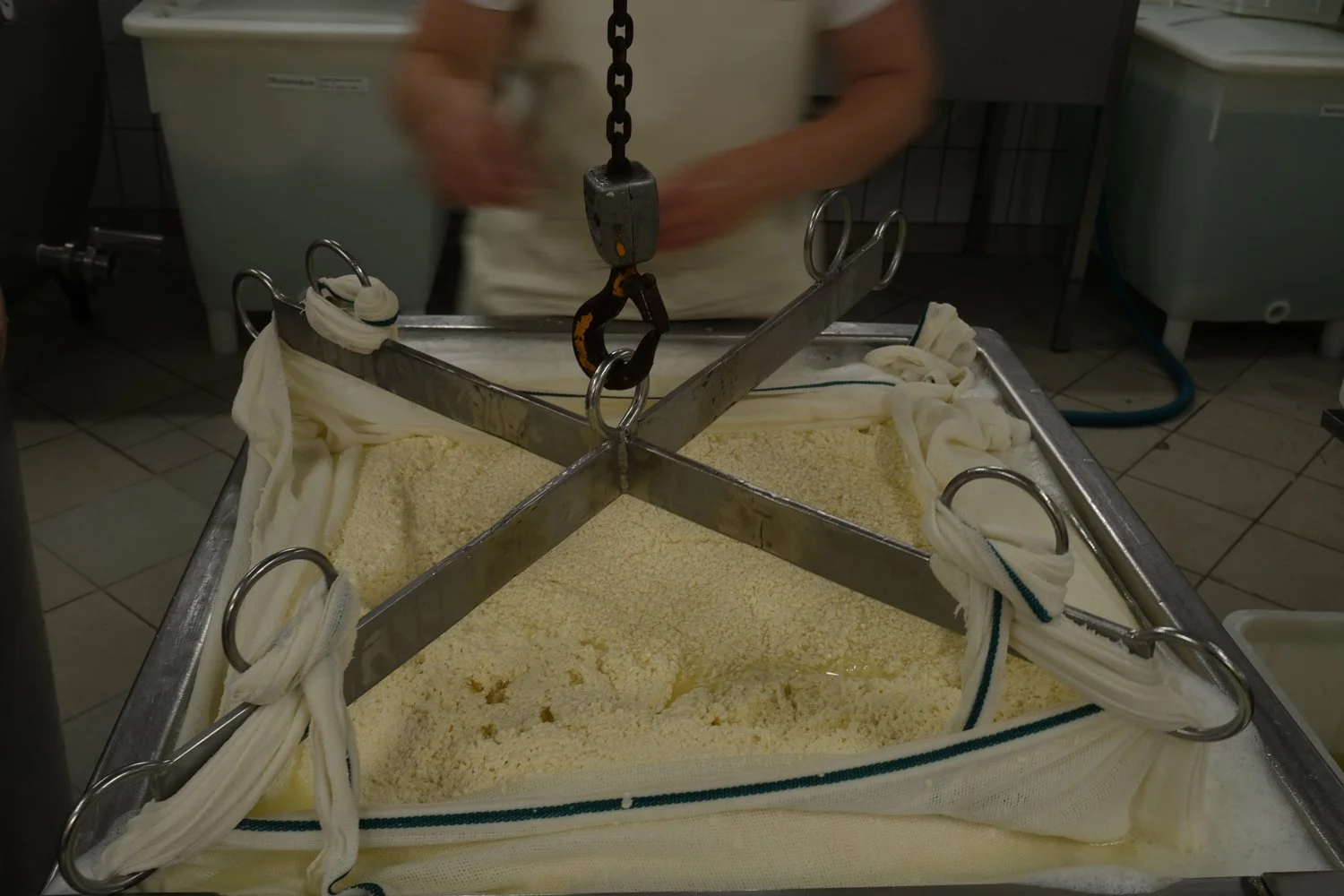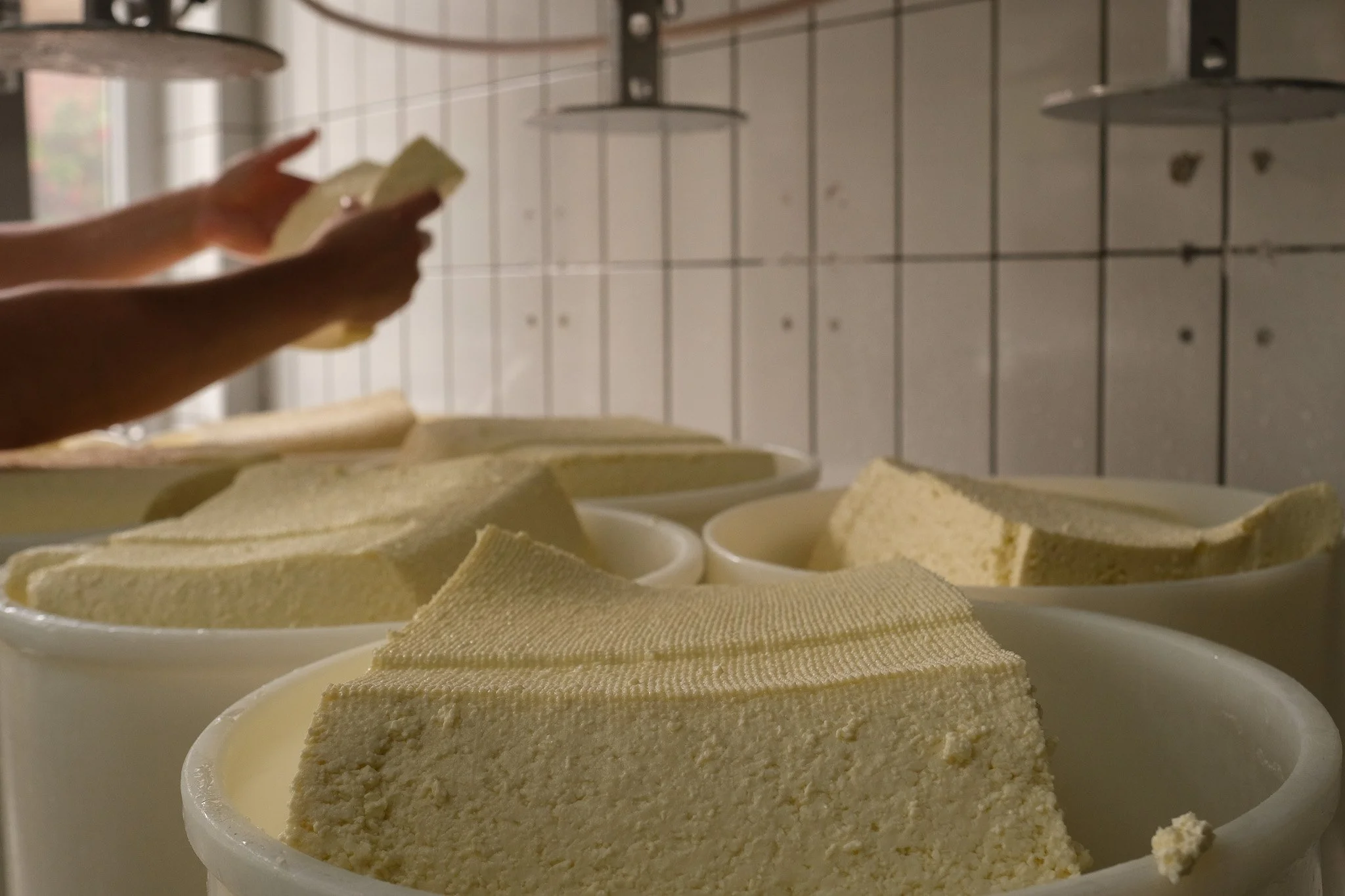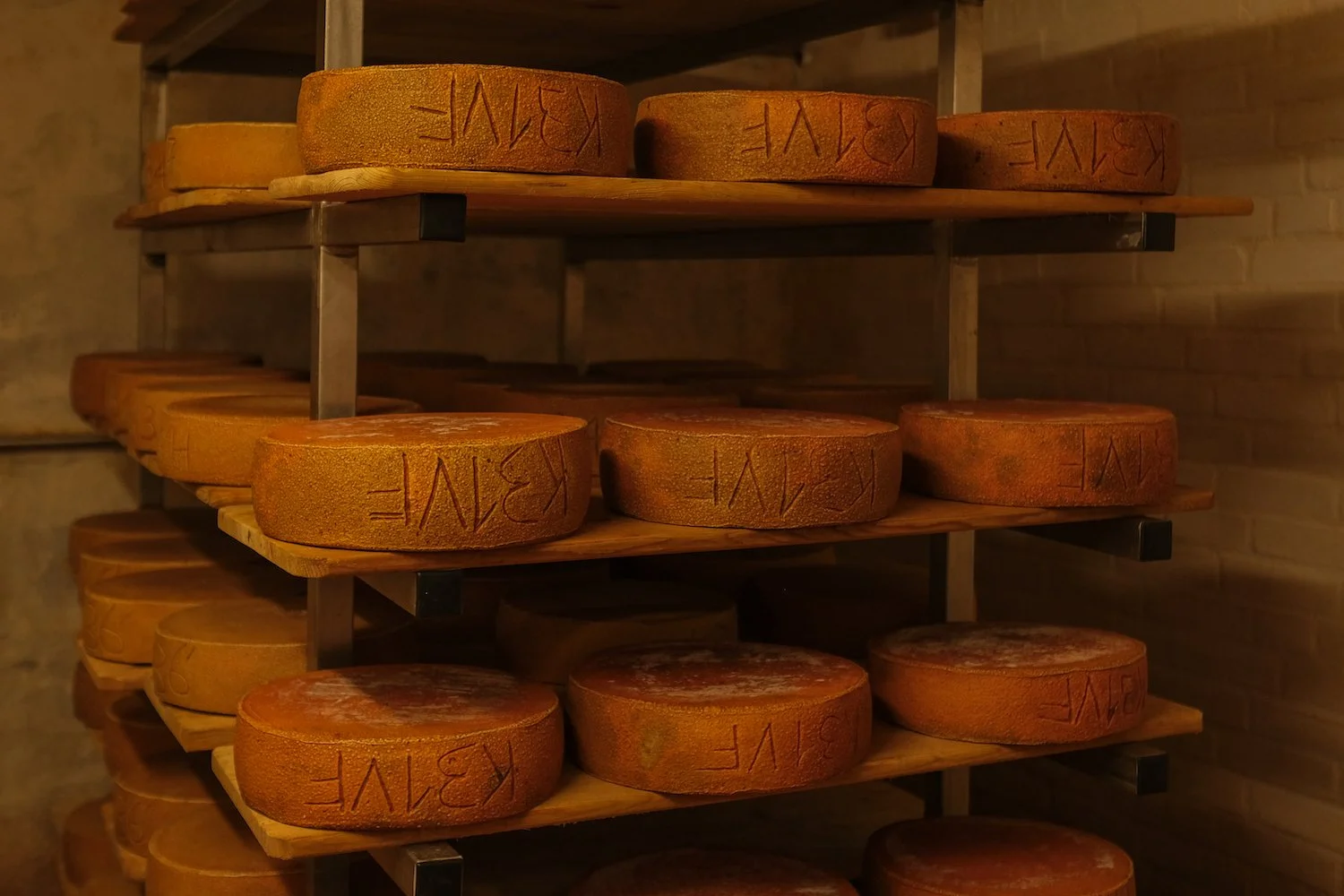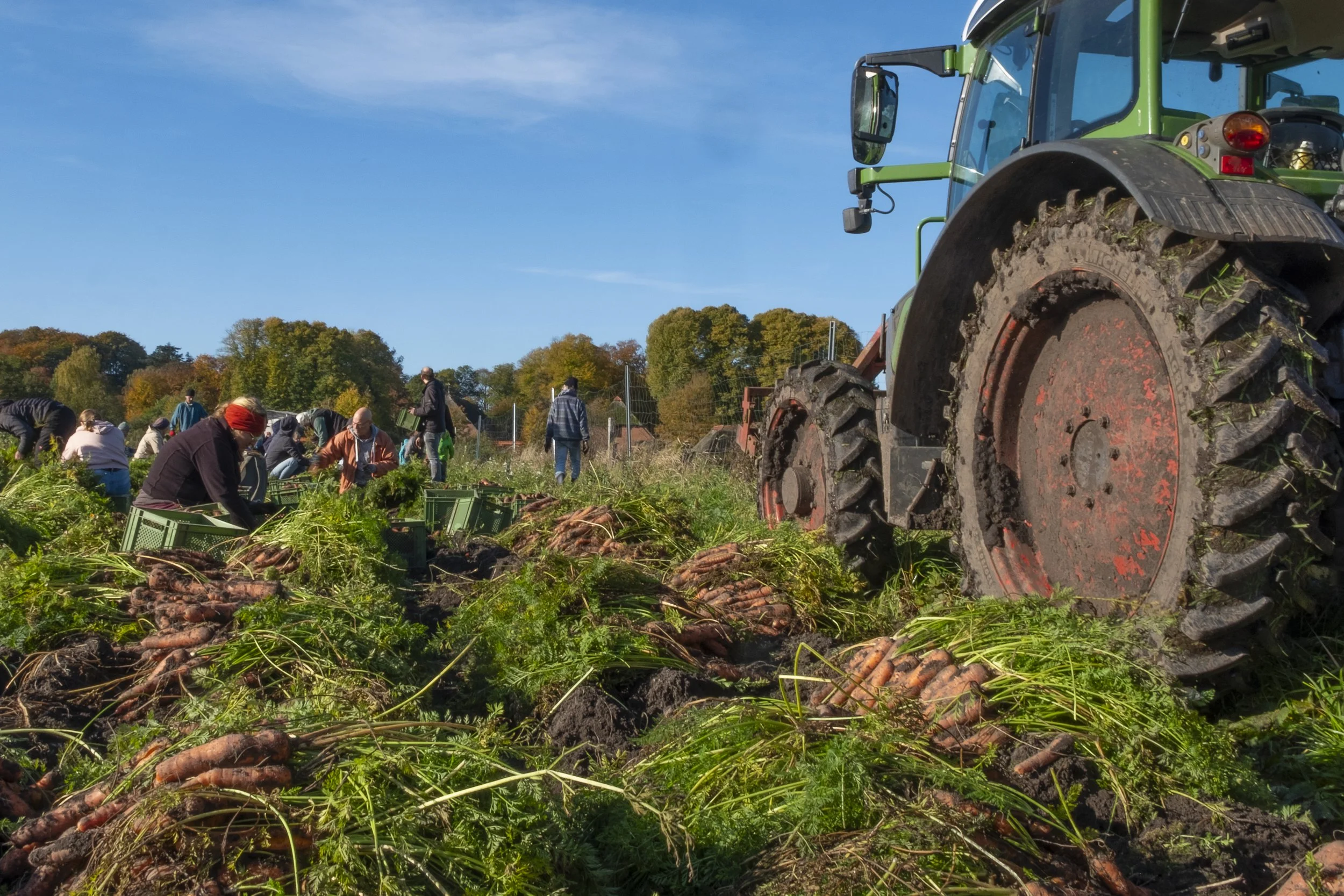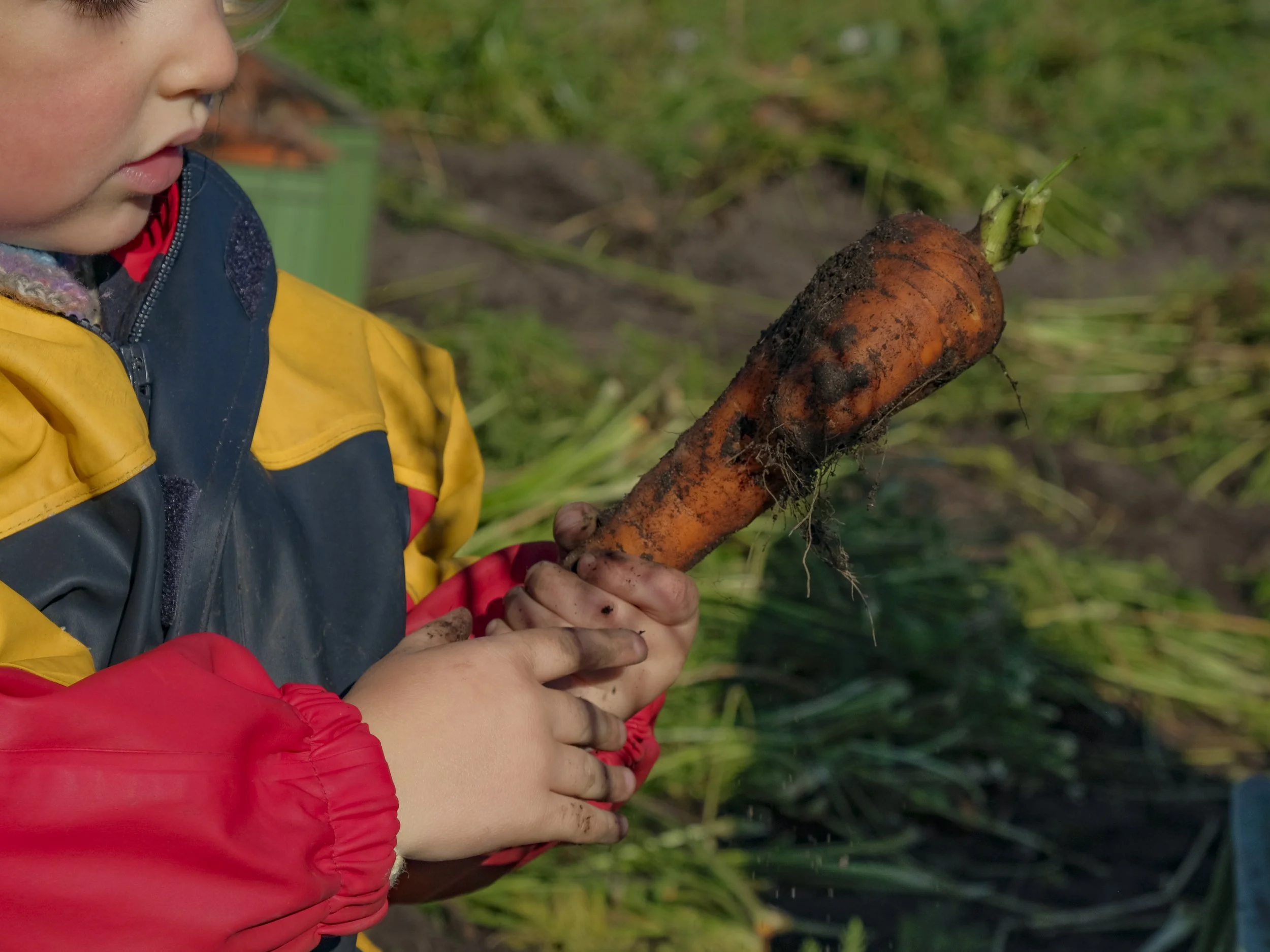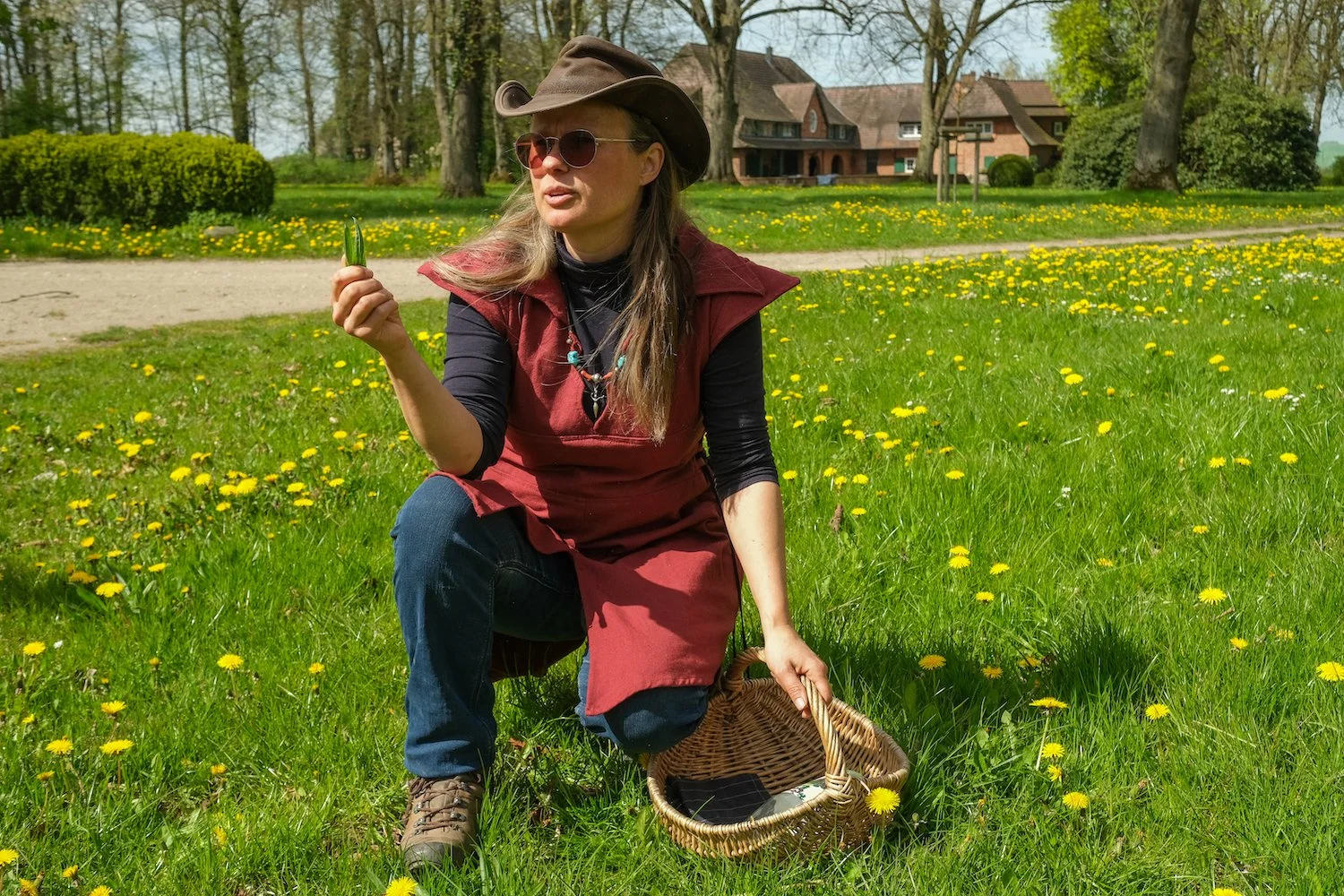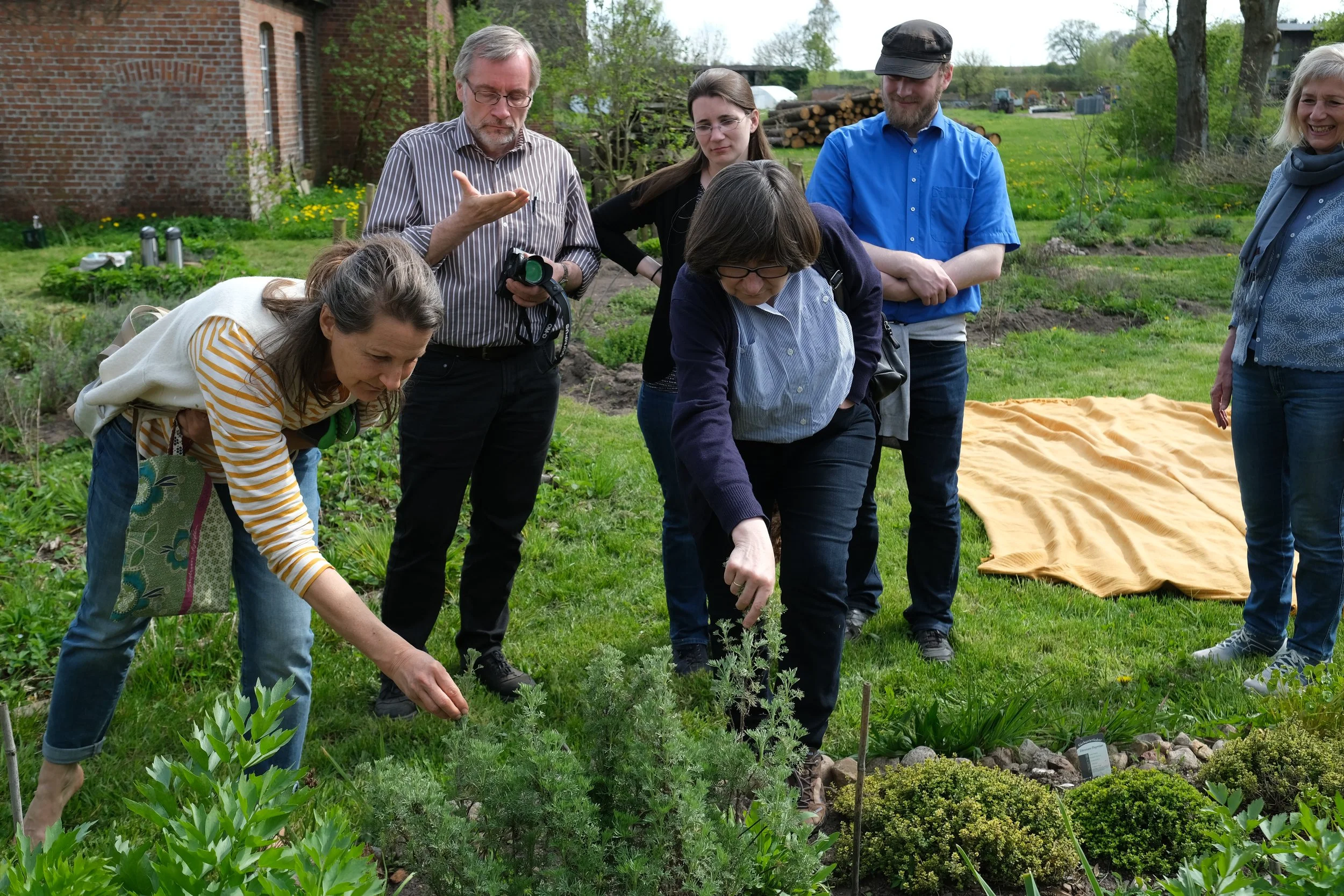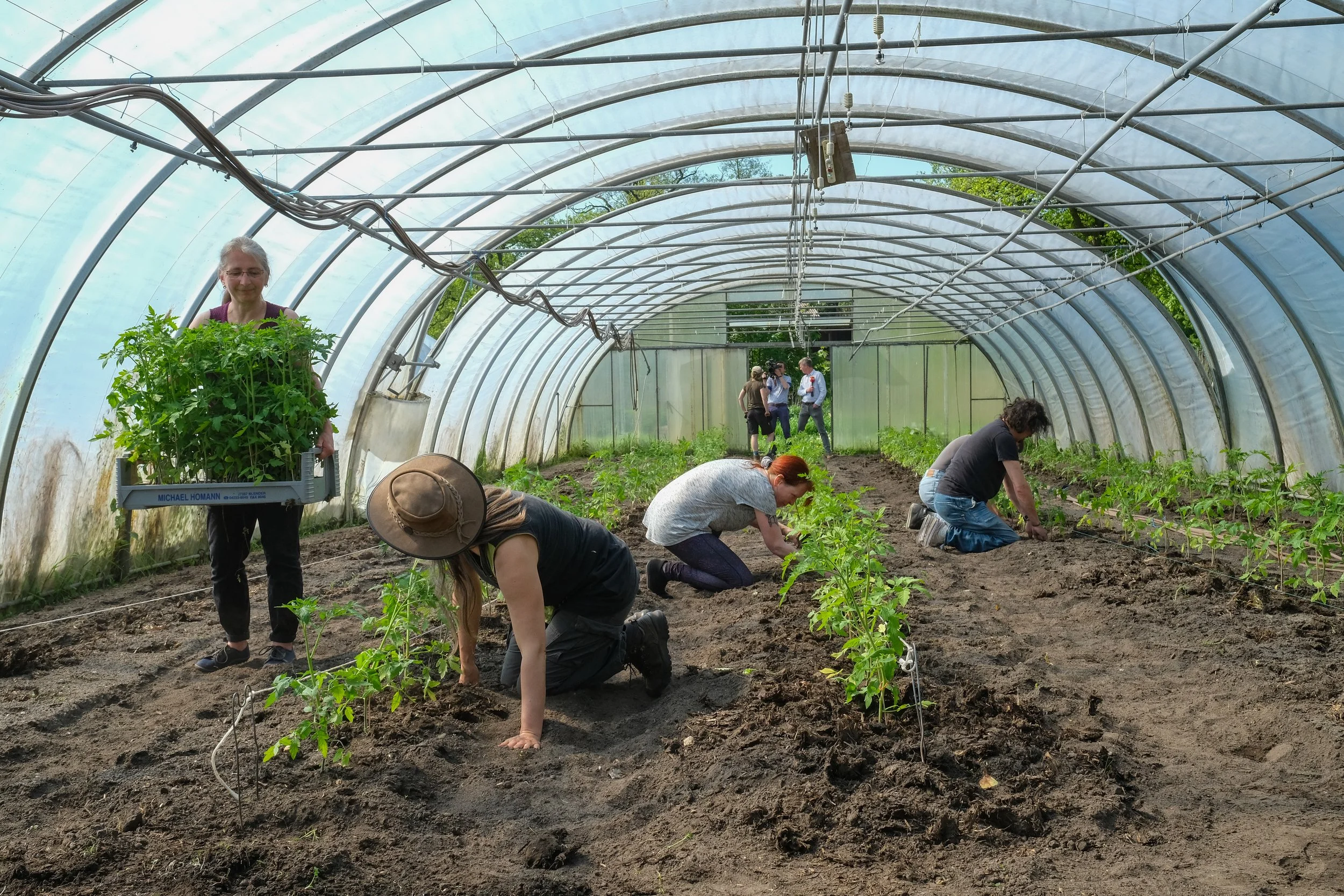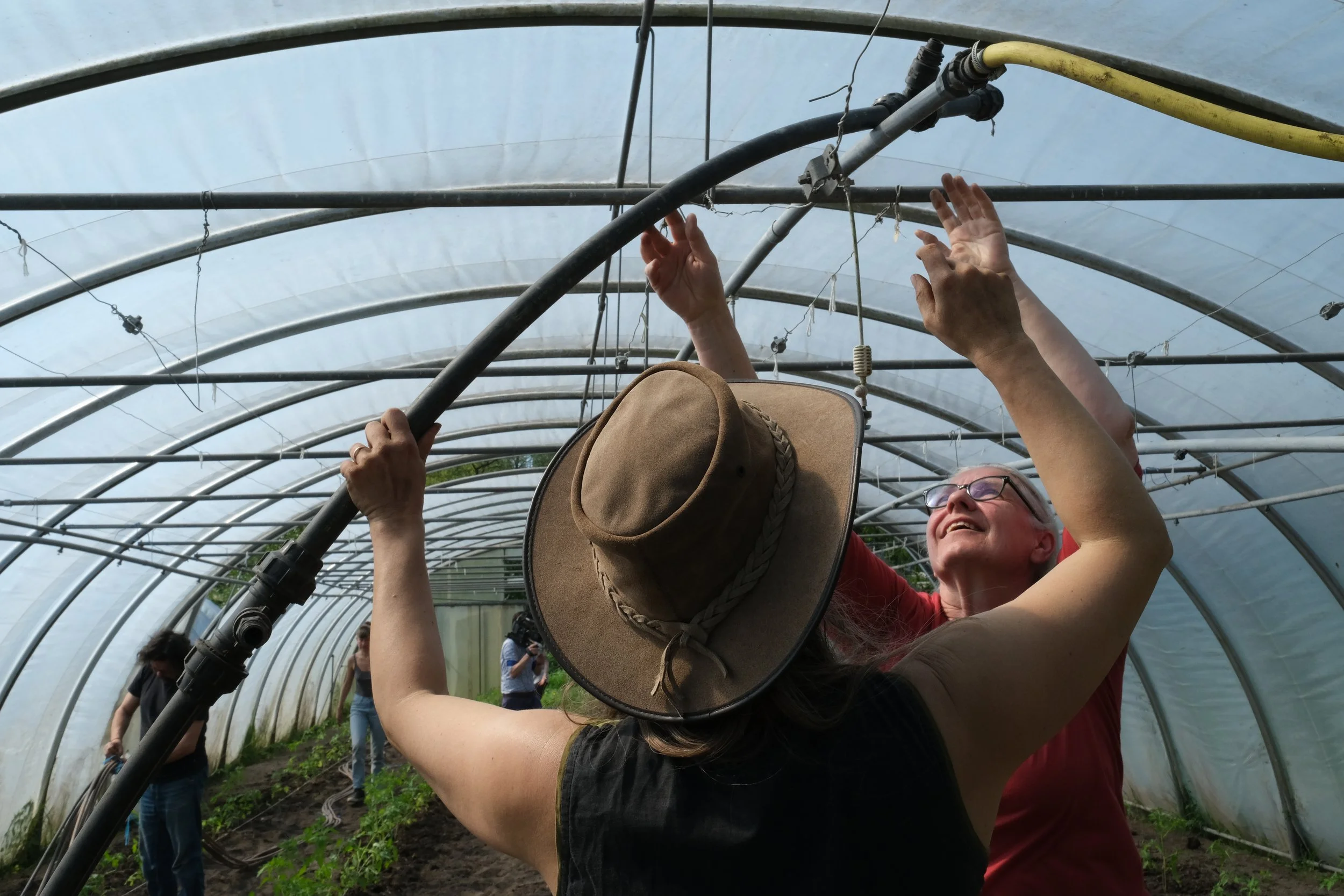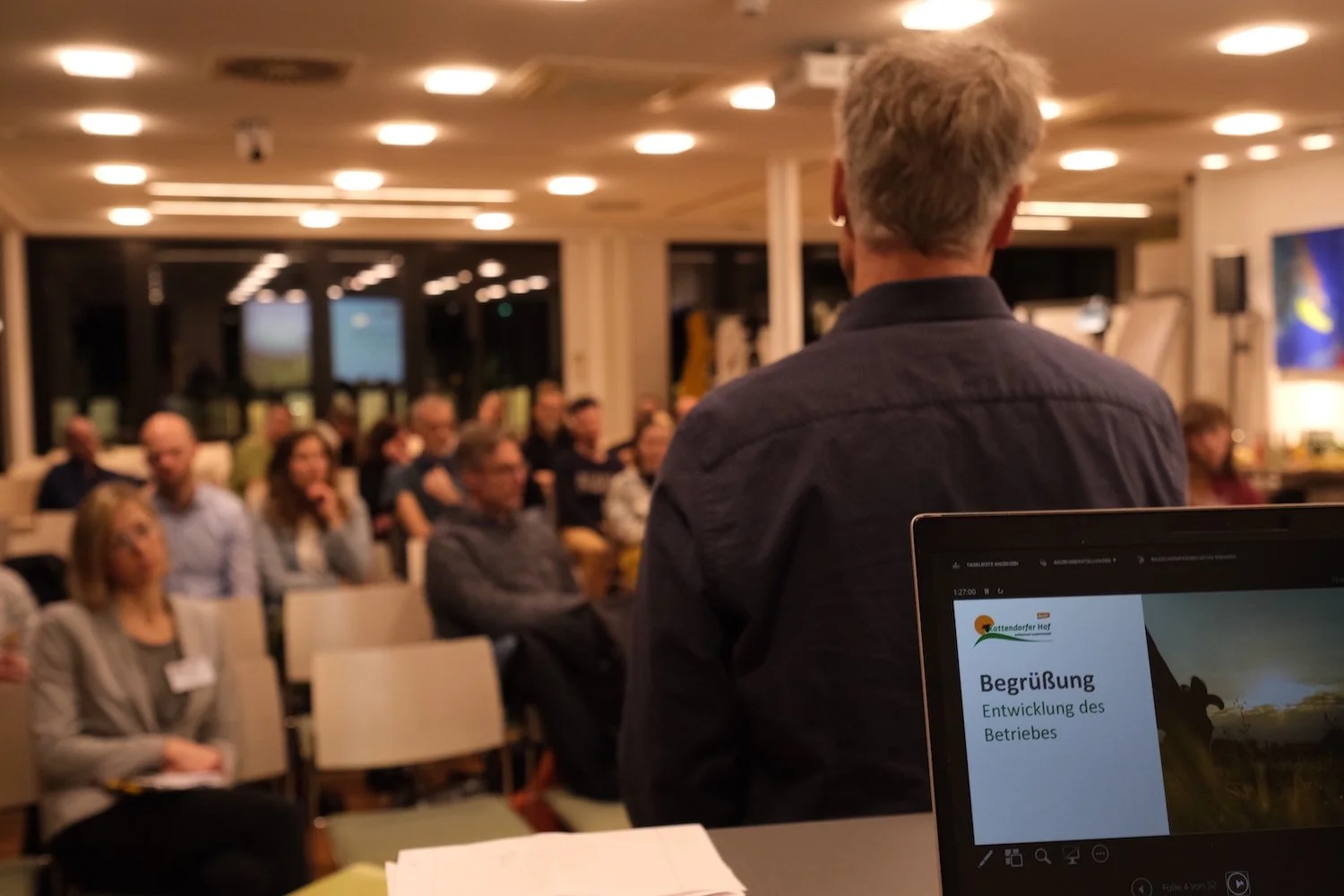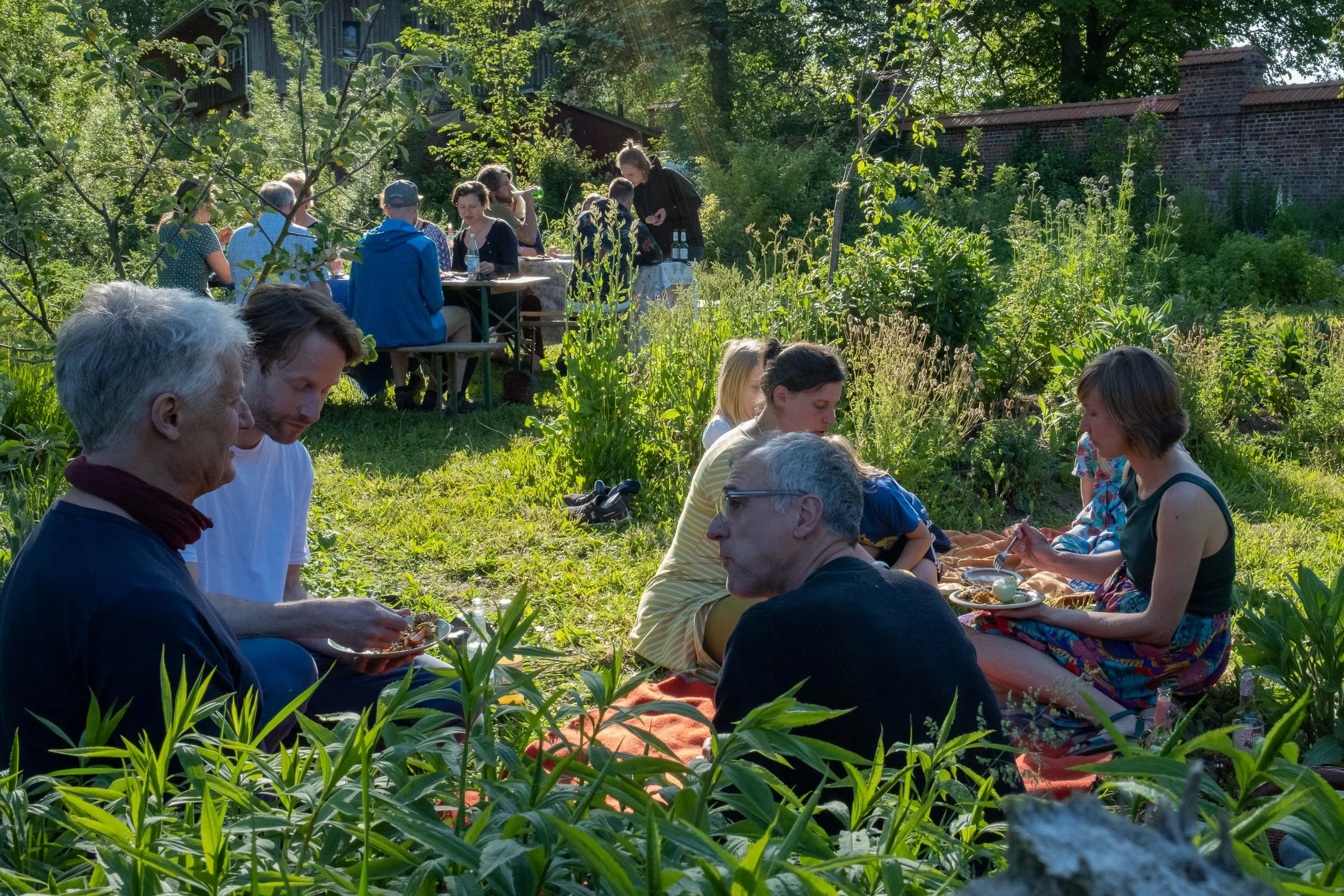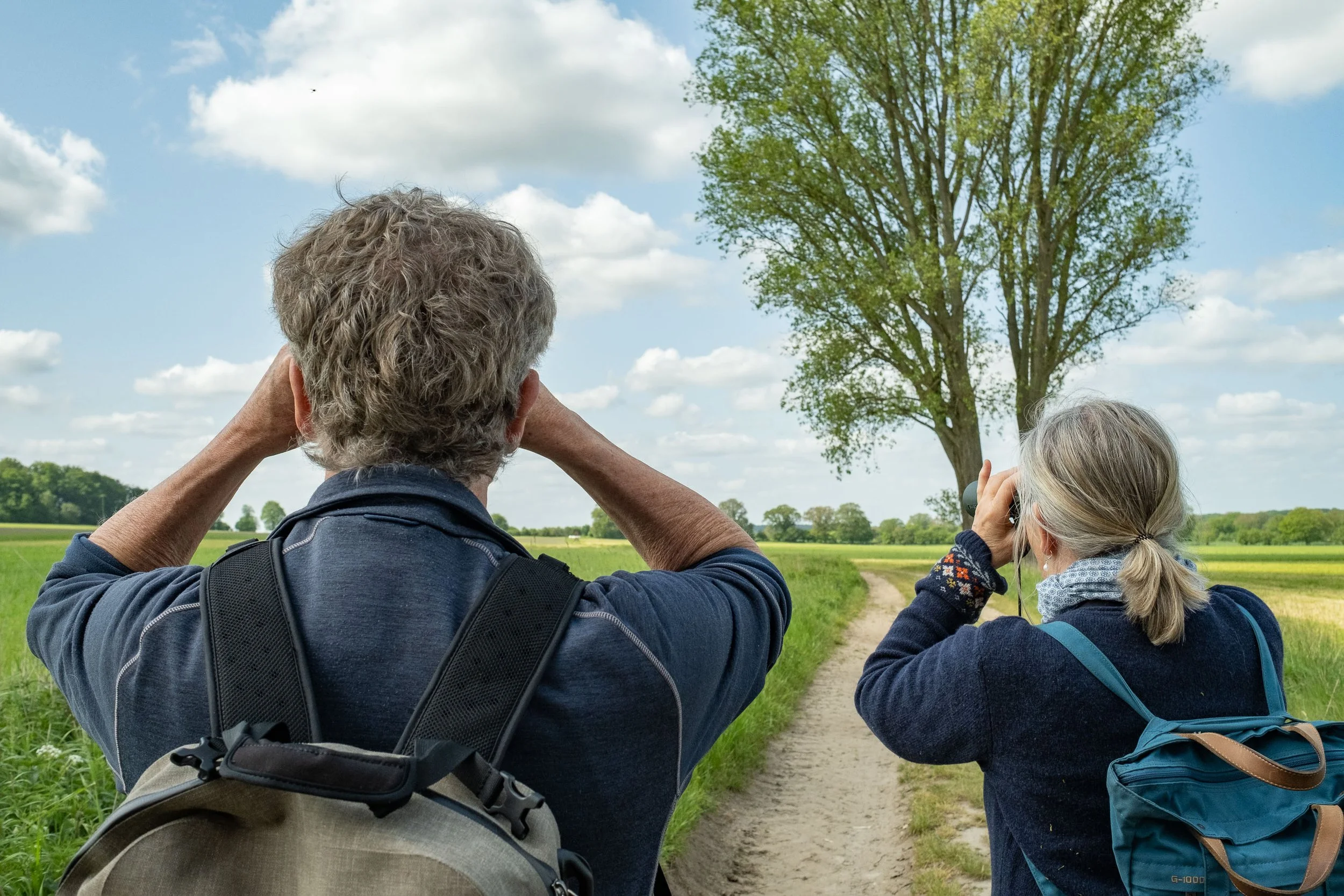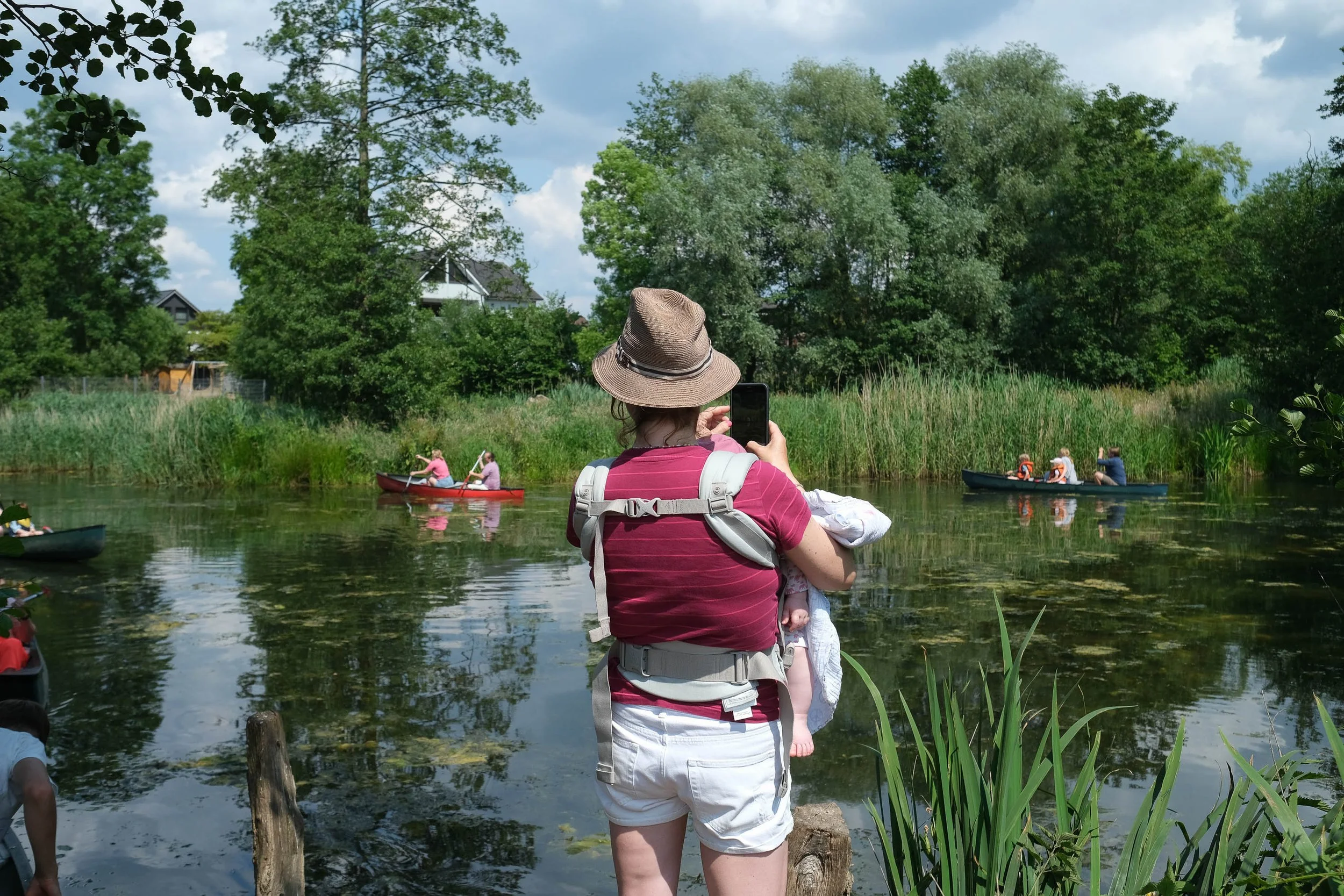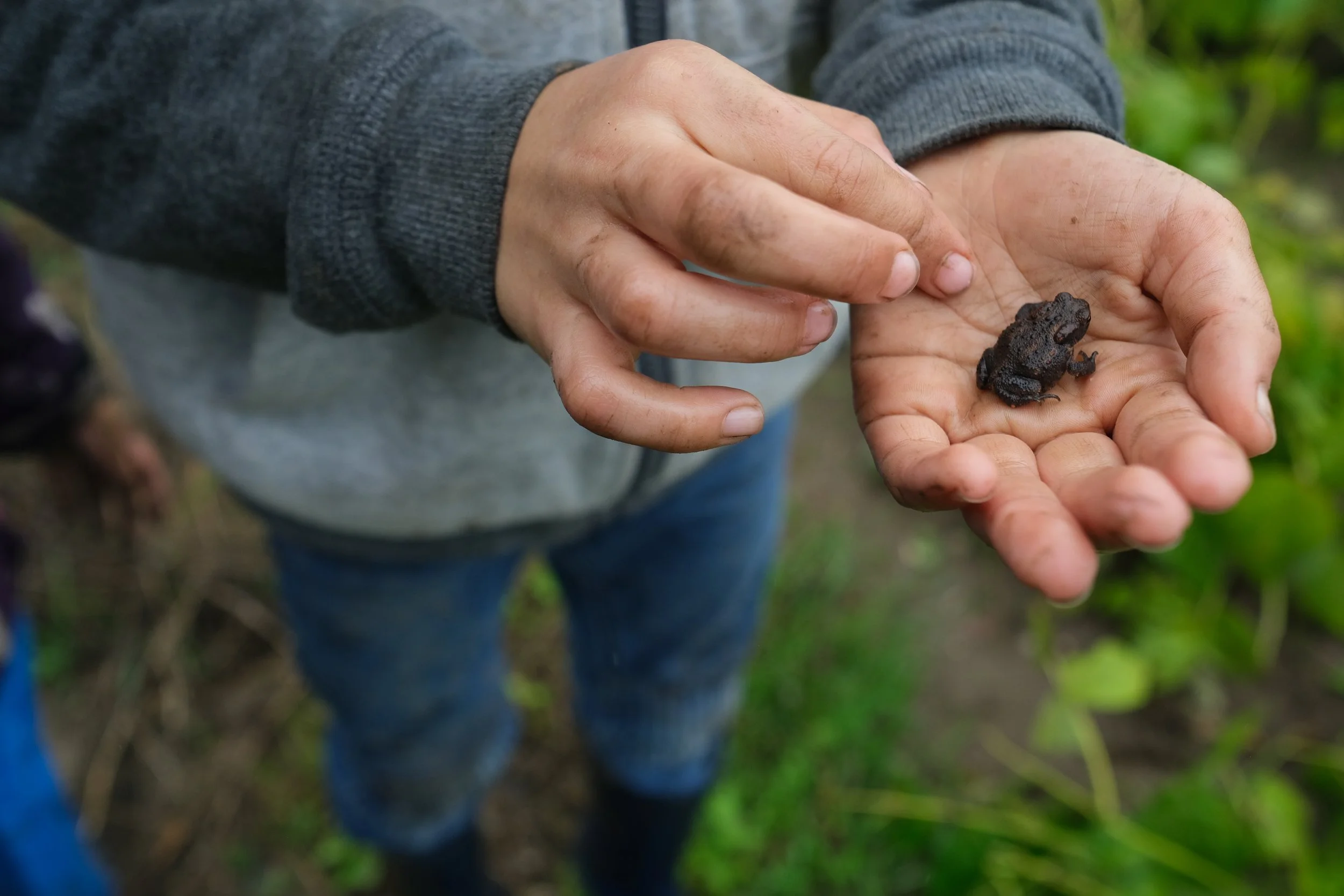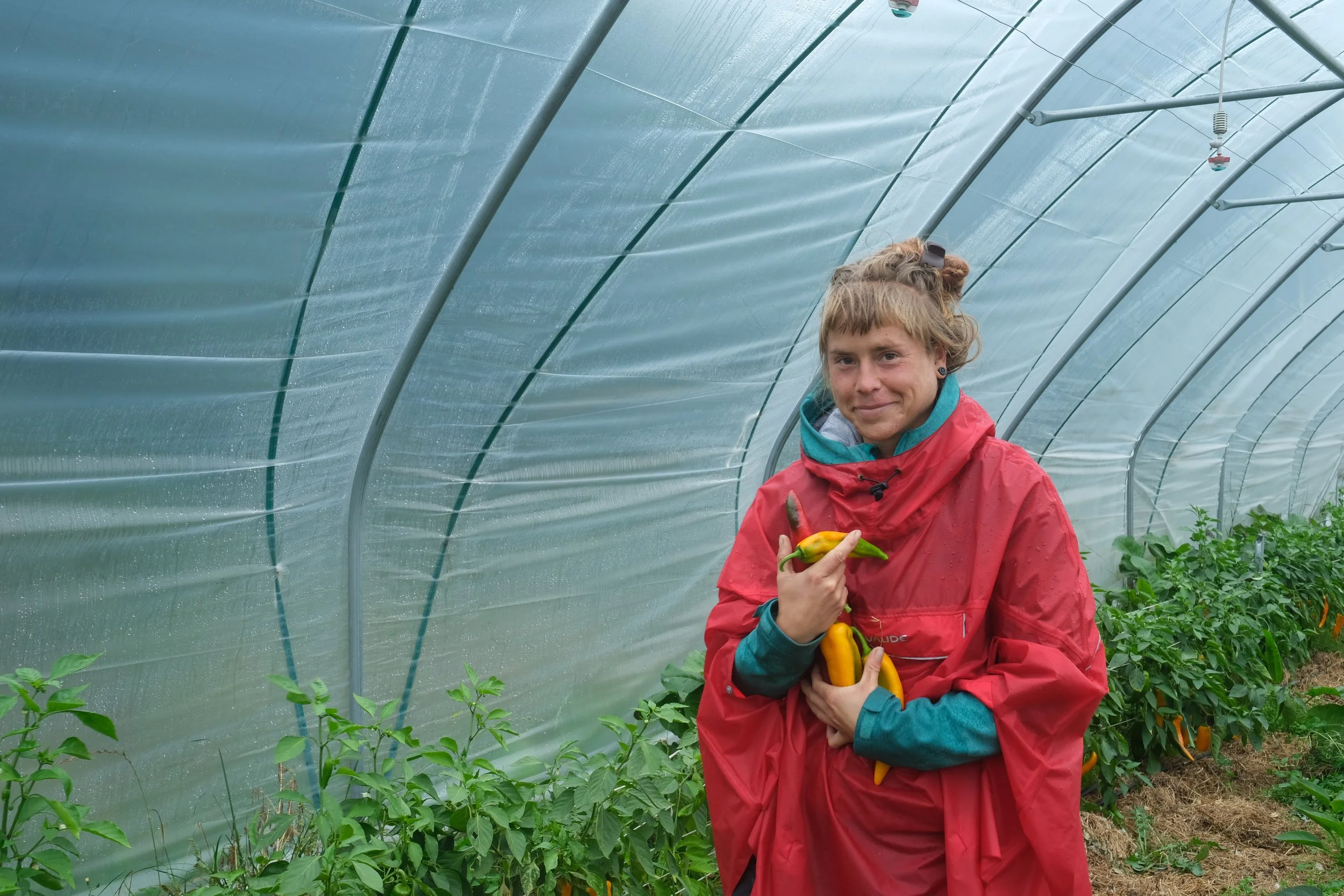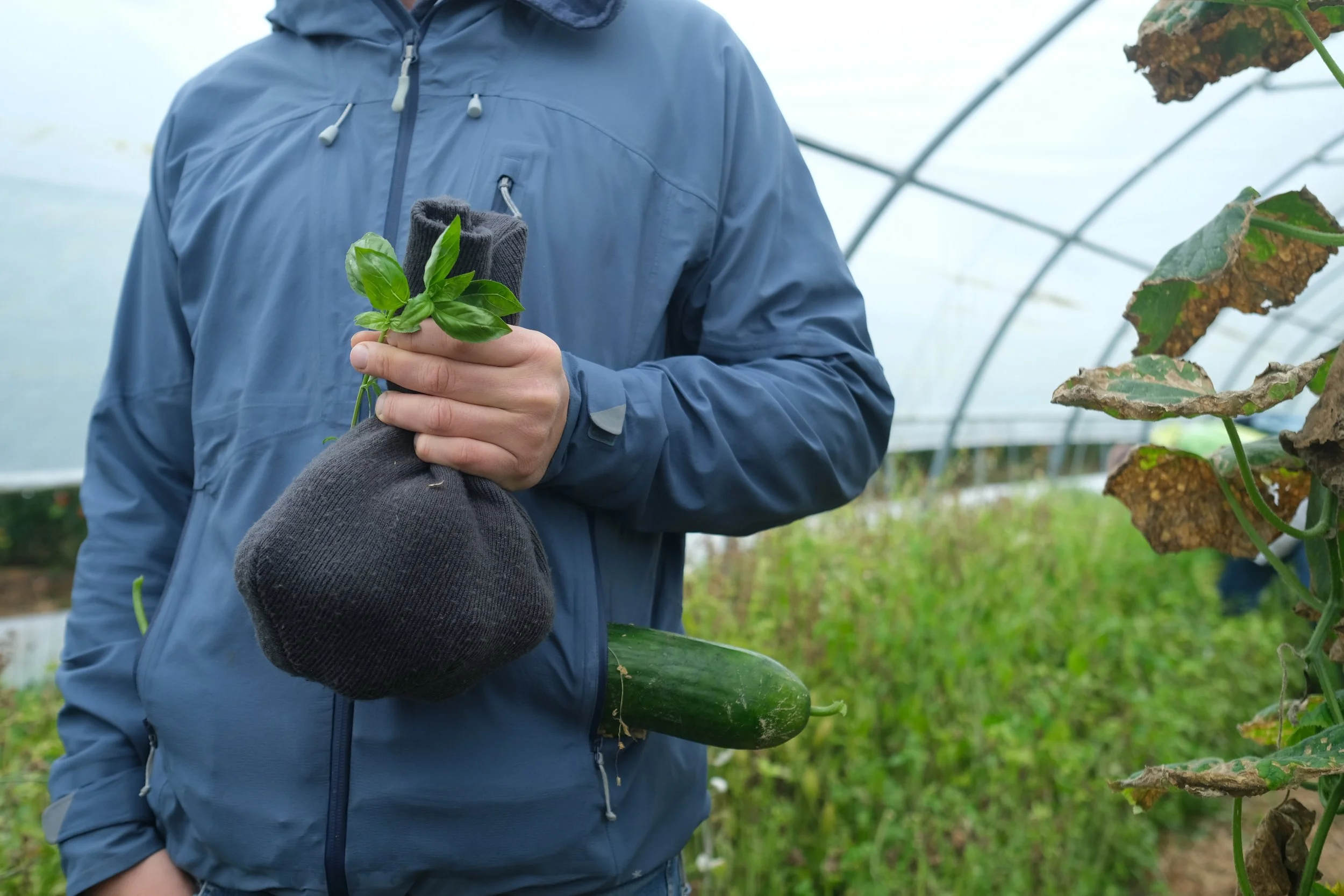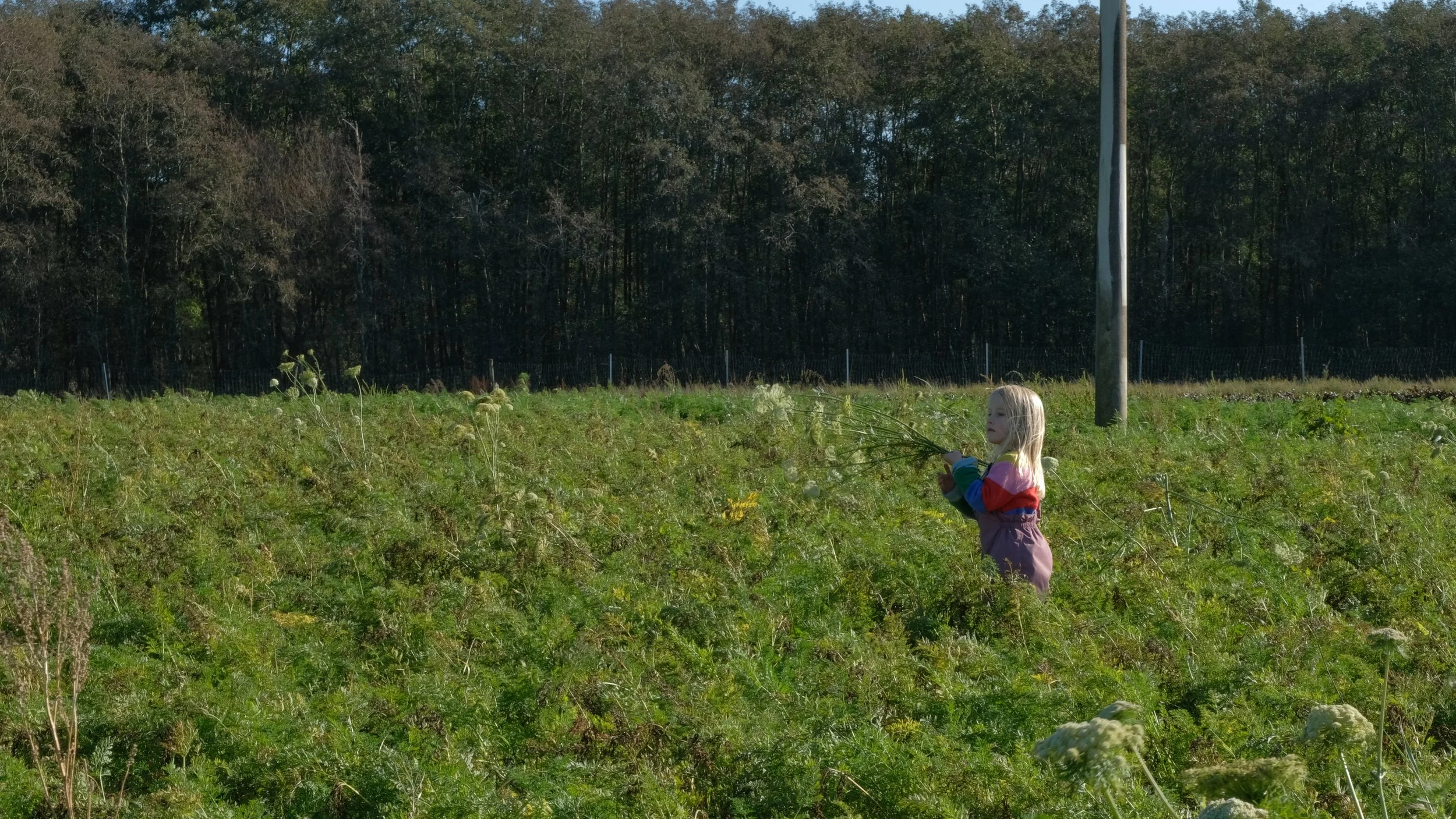Kattendorfer Hof, Germany
Give and Take
by MAREN PREISS
“Everything is interaction.”
Alexander von Humboldt
The Farm
The biodynamic Kattendorfer Hof, founded in 1995 by Mathias von Mirbach and two partners, is situated in Schleswig-Holstein, 35 km from Hamburg in Germany. The farm with its 80 staff members cultivates 435 hectares of land on two different farmsteads, one in Kattendorf, the second in Neverstaven, of which 40 hectares are used as pastures.
The farmers grow vegetables and grains and keep dairy and meat cattle, and pigs. Part of the food, such as dairy products and meat, is processed on site. The farm practices a six-year crop rotation. Soil fertility, biodiversity and animal welfare are key.
985 members are committed to Community Supported Agriculture (CSA), 635 of those subscribe to the full product range (as of mid summer 2023). For some of them solidarity goes beyond the subscription: they help with planting and harvesting, and invest money to support the transition to sustainable energy.
The farm can rely on agricultural subsidies, the capital of private investors and the support of the BioBoden cooperative, which as a new shareholder helps to manage generational change. The land is leased. The food is distributed through member-organized cooperatives, seven farm shops and farmer markets.
When asked, why the founder, managing director and master farmer Mathias von Mirbach has chosen to combine the biodynamic approach with the CSA model, he answered:
“Every human on Earth has the right of access to clean water, clean air, and good and healthy food. But people often forget that this right is closely related to their own responsibility. Industrial agriculture will not be able to feed humanity, because its resources will be depleted in 50 years. Community Supported Agriculture, based on organic farming and circular economy, by contrast, has the potential to solve the global agricultural crisis: it preserves our natural resources, and consumers and farmers are closely connected, treating each other fairly.”
Circular Economy
The organic Kattendorfer Hof is based on the circular economy according to which no more resources may be withdrawn than can be returned. That’s why the number of animals is linked to the available amount of hectares and thus the available food. From spring to autumn, the 70 cows graze on generous pastures. Twice a day they are driven back to the milking parlour through the meadows of Schleswig-Holstein.
The cows give high quality manure, and the grassland on which they graze is an excellent carbon dioxide reservoir. To maintain the balance of the circle, the animals are fed with fodder exclusively grown on the farm, mostly grass and clover. The fodder is only supplemented with salt and mineral feed.
A primary benefit of clover is its ability to fix atmospheric nitrogen via symbiosis with root nodule bacteria, Rhizobium, contributing available nitrogen to grasslands. This helps maintain soil fertility and increases yield. Clover itself is a valuable animal feed with a higher nitrogen content than grass. In addition, clover benefits flower-visiting insects by providing them with a rich source of nectar and pollen in summer.
Community Building I
CSA members enjoy a great variety of vegetables at the Kattendorfer Hof. Together with their teams the farmers Julia Hinrichsen in Kattendorf and Lukas Fröhlich in Neverstaven sow and plant more than 60 different types of vegetables over the year, among them greens you would never find in a supermarket. The black kale, which originates from 18th century Tuscany, Italy, has not just a high nutritious value, with its long leaves it also offers one of the most photogenic scenes you can find on the fields of the farm at the end of the summer. The coloured chromolithography with some vegetable classics is taken from an old German cooking encyclopedia, the “Universal-Lexikon der Kochkunst”, Leipzig 1909.
What we rely on: Healthy Soil
Farmer Lukas Fröhlich with his son Paale on the tractor, preparing the field for a new season by means of shallow tillage. This gentle form of tillage helps to maintain soil structure, fertility, and organic matter while minimizing soil disturbance. The added chain is designed to crush bigger clods of earth.
Healthy soil is one of the greatest treasures that was given to us. It is said that there are more living things in a teaspoon of healthy soil than there are humans on Earth. But this treasure upon which we all rely, is becoming increasingly scarce: Estimates indicates that in the last 40 years the world has lost a third of its cropland due to poisoning by chemical fertilizers and erosion. We are about to destroy the basics of our lives.
Before the groundbreaking contribution of German scientist Justus von Liebig and his Haber-Bosch process – a method for synthesizing ammonia from nitrogen and hydrogen, crucial for the production of chemical fertilizers) – humus, the rich, dark organic material found in fertile soil, was considered as something mystical, a sort of divine essence, akin to a life force. It was chemistry that stripped the soil of its soul, luring the farmers with the promise of now being able to control and enhance crop growth. Today we face the consequences: unsustainable mass production, unhealthy products, depleted and eroded soil and an immensive biodiversity loss. The Haber-Bosch process is responsible for around one per cent of global energy consumption and 1.4 per cent of carbon dioxide emissions.
Biodynamic agriculture puts nature back in its place. Its holistic approach considers the farm as a self-sustaining ecosystem. Master farmer Mathias von Mirbach sees himself as part of a long line of predecessors and hopefully many more successors. ”We are working on land that has been used for arable farming for quite a long time, around 200 generations have worked the land before us. That’s why we see it as our mission to preserve the land entrusted to us and to develop its fertility by increasing the humus content of the soil.” According to experts a humus increase of 0.1 % per year results in a storage of approximately 8 tonnes of carbon dioxide per hectare. Mathias von Mirbach: “This clearly shows the global dimension of humus-building. Nowadays, unfortunately, the humus content of soils is declining globally and carbon dioxide is being released instead of being bound.”
As an organic farm the Kattendorfer Hof doesn’t use any pesticides, chemical fertilizers or genetically modified seeds. Instead, the farmers rely on a six-year crop rotation and on remedies provided by nature such as green manure crops, cow manure and biodynamic preparations. The latter are distilled from plants like yarrow, chamomile, stinging nettle, oak bark, dandelion, and valerian and aim to promote the growth and quality of the plants.
Farmer’s pride: Lukas Fröhlich examines the humus in Neverstaven. Earthworms are an indicator of soil health, they improve soil structure by dragging down organic matter and aerate the soil by creating tunnels which also improve drainage.
The Kattendorfer Hof does not follow the “No tillage” law, popular with many of today’s organic farmers. Instead, the soil on the two farmsteads is worked shallowly to disturb the soil organisms as little as possible. “Tillage is only a means to an end”, says farmer Lukas Fröhlich. To prevent erosion and the leaching of nutrients, the fields in Kattendorf and Neverstaven never lie fallow as the plants on the fields feed the soil organisms. “Every ray of sunshine that we can bind through photosynthesis, nurtures the soil and its organisms and helps our atmosphere”, Lukas Fröhlich said.
Photosynthesis removes carbon dioxide from the atmosphere and replaces it with life-giving oxygen. This supports the communities of microorganisms in the soil to regenerate the topsoil, restore the water balance and improve the nutrient density of food. Without photosynthesis no topsoil.
Community Building II
Stefanie Maaß, biologist at the Freie Universität Berlin, was kind enough to examine the soil of the farmstead in Kattendorf. What she saw through her microscope after she had extracted the organisms from it was a rich biodiversity: beetle, beetle larvae, predatory mites, springtails, thunderbug larvae, barklice, horned mites, diptera larvae, turtle mites and homoptera.
She also determined the hydrophobicity of the soil: the amount in which its particles repel water. Good news for the farmers: it was low. "For a soil used for agriculture, this is pretty good", Stefanie said. In times of drought the farm uses water from its own wells.
Photos by courtesy of Stefanie Maaß
As the weather in times of climate change becomes more and more unpredictable and therefore the time frames farmers need to accomplish a specific soil care treatment are getting smaller, the farmers on the Kattendorfer Hof work with undersown crops. Lukas Fröhlich sows cabbage together with grasses and white clover. The growth of the undersown crops temporarily ends when the cabbage leaves cover the soil and stop the light supply. After the cabbage harvest is finished, the time for the undersown crops has come: It can continue to grow, providing the desired effect to nurture the soil and prevent it from erosion.
Lukas Fröhlich also uses companion plants to control pests. Each spring he sows white cabbage together with corn flowers. Does it help? “Creating a habitat for beneficial insects can never be wrong”, he said. “But I still wouldn't dare to dispense with the protective nets.”
But like on every farm, not everything is sunshine and roses in the life of the farmers of the Kattendorfer Hof. While in 2022 the weather conditions for the grains were perfect – “We had moisture and sun exactly when we needed it”, Mathias von Mirbach said, after he had brought in a record harvest – 2023 turned out to be a disaster. Mathias: “We not only had a low rye yield, we harvested less than half of the amount of a normal year. The grain also lacked its baking quality. We weren’t able to supply our bakeries and the mill with wheat, spelt and rye. The grain that we have sown, cultivated, harvested and dried with a great deal of labour can now only be used as animal feed.” This year it was the other way around: The farmers had moisture and heat when they needed it least so that the grain on the ear began to germinate. A real bummer for an experienced farmer like Mathias who initiated the generational change on the farm some time ago.
One of his successors, the young farmer Lukas Fröhlich, is well aware of the challenges climate change poses for him as a farmer: “You have to be vigilant and flexible, you have to adapt your work to the changing conditions and experiment a lot.”
The dungheaps are about to disappear from German villages. At the Kattendorfer Hof, the farmers know well about its value.
Community Building III
Each morning at 9 a.m. the farmers meet for the daily morning round in the courtyard of the farm in Kattendorf. Before everyone gives a short report on the work to be done that day, the group sings together. When I made this photo, in October 2021, the farm crew started their working day with the “Irish Travel Blessing”: “May the road rise to meet you / May the wind be at your back / May the sun shine warm upon your face / The rains fall soft upon your fields…”
Field Work
Community Building IV
Outdoor lunch with the farmers’ team during the potato harvest in front of the house of farmer Lukas (in the red shirt) and his wife Lena (second photo) who provides for the culinary well-being of the farm workers in Neverstaven and helps wherever womanpower is needed. Lukas and Lena are two of the shareholders of the farm. They have two young sons, Freede and Paale
Juliane and the Cowgirls
Julia and the Art of Cheese Making
Julia Sonnet is the master of cheesemaking. To follow her during the production of mountain cheese is like attending a zen buddhistic lesson. lt takes a whole morning, from the fresh milk running into the copper vat to the pressing of the soft cheese mass into the moulds. After some hours of rest those will be transferred to the farm‘s own maturing cellar where the cheeses will remain for twelve months before being sold in the farm shops. Next to 22 different types of cheese, Julia and her team produce butter, yoghurt, sour cream and curd.
Community Building V:
The Beneficial Bond between Farmers and CSA Members
CSA members and village people enjoying food and the Irish Folk Band Hepta Polka at the Strawberry Festival in Kattendorf in the summer of 2023
Many CSA members support the farmers beyond their yearly subscription. They build cooperatives and distribute the delivered vegetables on their own, they help with planting and harvesting. Others invest private money to support the farm’s transition to sustainable energy. CSA members meet with the farmers online and offline to learn more about the ups and downs of the farm.
I myself became a CSA member 1,5 years ago. What I enjoy the most next to the healthy products, is that I gain insight into the challenges of running an organic farm in times of climate change and massive farm closures. Estimates indicate that in Germany an average of 3.560 farms close their doors every year. By subscribing to the farm’s products, I contribute to preserving a form of agriculture that I consider essential and worth supporting: organic small-scale farming, working according to the rules of circular economy.
Anyone who has ever tasted the flavour of organically grown vegetables, anyone who has ever seen a shovel of dark humus pervaded by earthworms or cows grazing on rich pastures, anyone who, through a pair of binoculars, has ever spotted a majestic Steinadler on a television tower, spreading its wings and flying over the rye field in the peak of summer, will have no doubt about how important it is to preserve this treasure, that is one of our cultural resources.
The same applies for the hard work involved in growing healthy food in these times of climate change and political uncertainties. Knowing who grew and harvested my food under which circumstances, knowing what it takes to produce nutritious vegetables, cheese, meat and grains, makes me humble and grateful.
I like to eat according to the seasons. I like it to be connected to the farmers, their products, the challenges they face. Proximity creates commitment. And in times of crisis and fragile supply chains I find it reassuring to know that “my farmers” will provide me with vegetables, milk, cheese, meat and grain at any time. It feels good to be part of a community that helps to preserve this cultural heritage of (organic) agriculture that is significant for humanity as a whole. Being connected with what keeps us and the planet alive is more important than ever.
Photos and Text: © Maren Preiß, marenpreiss.de
All rights reserved.
